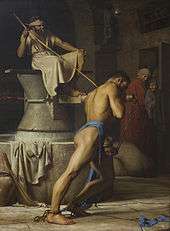
''If you have not ploughed with my heifer, you would not find out my riddle.'' [Judges 14:18 in relation to Samson's riddle]. Think on it relative to what the 'mill ' represents. Together with the remaining parts of that same riddle. Found within. Clue 'A churning in relation to a grinding'.
The Symbolism of which is represented by ‘Grooves’, [key]. Especially those in the ‘Grand Gallery’. Or in the ‘Kings’ chamber’, i.e., Higher self, in the positive sense. Common parlance... ‘To plough ones furrow’. Represented by the... ‘Great /lessor Bear’ constellation.
Question. Which came first; the naming of the constellations or this 'subject'.
"Will the wild ox consent to serve you. Or will he spend the night at your manger?" Job.39:9. ['Book of Job' / Melissa Lees].
'Wild' in relation to 'domesticated'...as a means?
And/or: ''If you have pulled this card. you are asked to embody your star consciousness. The star of your being is rising....'' [Card 17 -Sothis- 'The Anubis Oracle'].
Its old name = Septentriones. ‘Seven ploughing oxen’. [See also 'New View Over Atlantis'. Chapters one/two, in relation to 'Notch' symbolism], i.e.,"and on a bank leading up to a mountain ridge, or down to a ford, the track cut deep so as to form a guiding notch...." OR " in a mountain pass the road cut deeply at the highest place straight through the ridge, to show as a notch afar off." [Emphasis...this readers]. That link to 'Hook' symbolism.
"Such a division of the 7 into these two constituent principles, the spiritual 3 and the material 4, was used time and again..." [Taken from 'Mystery of Numbers'].
"Ships have long been said to plough the sea, and ploughs to sail the earth. In a variant of the same ancient metaphor the modern French faucher le grand pre for sailing is literally to reap, or to mow, the big field; the reapers too leave a wake behind them. The German lexicographer Max Miller, last century, related 'oar' to a root by which it means 'as it were the plough-share of the water'; he added that the English word plough, the Slavonic ploug, has been identified with the Sanskrit plava...and with the Greek ploion = ship." [Taken from chapter 4, entitled ''Ploughing the Sea'' from the book 'The Book of Babel: Words and the Way We See Things' by N. Lewis].
'Field of Offerings' or 'Field of Reeds'?
11th hour?
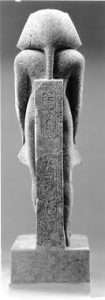
long or short?
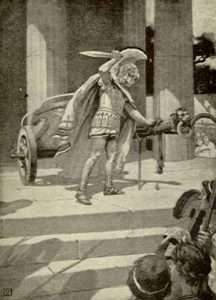 Analogy: "Of the four shrines enclosing the sarcophagus, the outermost {whose roof recalls the double Sed Festival with its symbolism of rebirth} is entirely of gilt wood decorated with Djed columns {the symbol of Osiris} alternating with knots of Isis on a background of blue enamel. In the narrow corridor, separating the walls of the outermost shrine from the one inside it, were found the 'steering oars' for celestial navigation." [Page 90 'Egyptian Mysteries' / L. Lamy].
Analogy: "Of the four shrines enclosing the sarcophagus, the outermost {whose roof recalls the double Sed Festival with its symbolism of rebirth} is entirely of gilt wood decorated with Djed columns {the symbol of Osiris} alternating with knots of Isis on a background of blue enamel. In the narrow corridor, separating the walls of the outermost shrine from the one inside it, were found the 'steering oars' for celestial navigation." [Page 90 'Egyptian Mysteries' / L. Lamy].
Side note: "The Isis" (/ˈaɪsɪs/ EYE-siss) is an alternative name for the River Thames, used from its source in the Cotswolds until it is joined by the River Thame at Dorchester in Oxfordshire. Notably, the Isis flows through Oxford and has given its name to several institutions and products of the city.
The modern form of the name, first recorded c.1540,[1] relates to the Egyptian goddess Isis.[2] The deity was venerated throughout the Roman Empire, and was worshipped at the Temple of Isis near the Thames in Londinium during the Roman occupation.

Facing east or west?
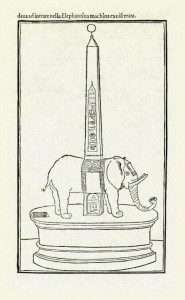
Moving 'mountains'?
The name "Isis" is especially used in the context of rowing at the University of Oxford. A number of rowing regattas are held on the Isis, including Eights Week, the most important Oxford University regatta, in the Trinity term (summer), Torpids in the Hilary term (early spring) and Christ Church Regatta for novices in the Michaelmas term (autumn). Because the width of the river is restricted at Oxford, rowing eights normally have a staggered start near Donnington Bridge and must then aim to "bump" the eight in front (i.e. catch up and touch or overlap with it sufficiently). The leading eight aims to "row over" (i.e. finish the race without being bumped).
There used to be ornate wooden barges on the river bank at the southern end of Christ Church Meadow to house rowing facilities and for viewing races. Now the barges are gone and there are boathouses instead a little further down the river near the confluence with the River Cherwell. Poplar Walk in Christ Church Meadow is used as a route to and from the boathouses.
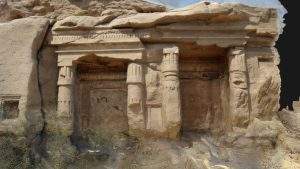
In the shrine of Hatshepsut at Gebel el Silsila can be seen an obelisk being taken from Aswan to karnak - downstream. All hidden behind other engravings. AND/OR: The row of shrines was situated on the west bank by the river, the shrines were cut in the rock just above the water line. In some cases the access to the shrines was possible from the land, although some of them were accessible only from the river. Thirtytwo shrines were cut in these parts of the rock which remained after quarrying was completed.
The name "Isis" is also used for the men's second rowing eight of Oxford University Boat Club, who race against Goldie, the men's second crew of the Cambridge University Boat Club, before the annual Oxford vs. Cambridge Boat Race on the Thames in London.
Define the parts to understand the whole {mindset}.
'Place of Rowing'.
And/or: Erétria (Greek: Ερέτρια, literally "city of the rowers") was a polis in Ancient Greece, located on the western coast of the island of Euboea, south of Chalcis, facing the coast of Attica across the narrow Euboean Gulf. Eretria was an important Greek polis in the 6th/5th …
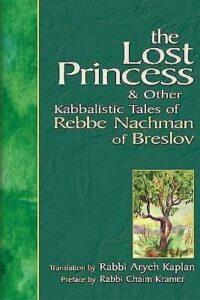
Extra: Further shrines were constructed near the river. Most of these date to the reigns of Hatshepsut and Thutmosis III. Included are the shrines of some high-ranking officials such as the Overseer of the Granaries Minnakht, the Overseer of the Seal and Royal Herald Sennufer, the Overseer of the Seal Nehesy, the Overseer of the Prophets of Upper and Lower Egypt Hapuseneb, and the Great Steward of the Queen Senenmut.[7] Senenmut's is noteworthy because the inscriptions show a change in the status of Hatshepsut. She is said to be the "King's First-born Daughter" and she is depicted as a pharaoh in a striding fashion.[8]
Additionally, three rock-cut shrines were constructed and the site also shows some royal stelae. The shrines belong to Seti I, Ramesses II and Merenptah.[3][7] One of the stele depicts Ramesses III offering wine to Amun-Re, Re-Harakhty and Hapi. The stele mentions year 6 of the reign of Ramesses III. Adjoining this is another stele, this one depicting Horemheb adoring Sety I.[7]
'Six'.
"There was once a king who had six sons and one daughter. This daughter was very precious to him and he loved her very much. And/or: Six sons: The six sons and the daughter allude to the seven most basic forces of creation, that is, the lower seven of the Ten Sefiroth." {'The Lost Princess'}.
Question. Akhenaten = 6 daughters and one son?
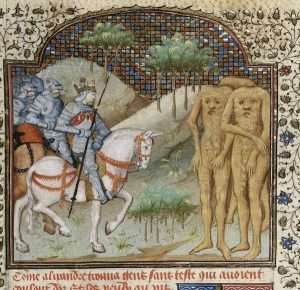
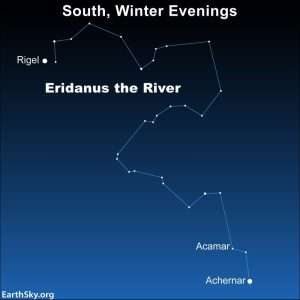
Begins at the left foot of Orion. Cetus {the whale} in the MIDDLE.
And/or: The history of Foeneus is concerned with certain mass emigrations from Canaan. Canaanites are referred to in the Greek myth of'Agenor, or Chnas, King of Phoenicia', brother of Pelasgus, Iasus and Belus, and father of Aegyptus and Danaus; Agenor invaded Greece and became King of Argos. His was probably the invasion that drove the Tuatha di Danaan out of Greece. Agenor had other sons, or affiliated tribes, besides Foeneus, Aegyptus and Danaus. These were Cadmus (a Semitic word meaning 'of the East'), who seized part of what afterwards became Boeotia; Cylix, who gave his name to Cilicia; Phoenix, who remained in Phoenicia and became completely Sanitized; Thasus, who emigrated to the island of Thasos, near Samothrace; and Phineus, who emigrated to Thynia, near Constantinople, where the Argonauts are said to have found him preyed on by Harpies. The Amorites, a part of whom lived in Judaea, were also Canaanites, according to Genesis, X, and in the time of the Hebrew Prophets kept up the old Aegean customs of mouse-feasts, kingcrucifixion, snake-oracles, the baking of barley-cakes in honour of the Queen of Heaven, and pre-marital prostitution; but they had early become Semitized in language.....
Side note: "Stashed away in a pit within an Iron Age or early Romano-British ditch, a rare collection of Iron Age swords and spearheads was/were discovered by 3 metal detectorists in South Cave, East Yorkshire in 2002. Hidden beneath a layer of amphora sherds, the dectorists uncovered 5 swords, each with its own scabbard, and thirtythree spear heads bundled up in animal skin {'wrapped'?}. The preservation of this find was so good that organic elements of the sword fittings, like antler, horn, and whale ivory, were still in tact. The amphora sherds may indicate the cache was deposited roughly when the Romans took over East Yorkshire, around 70AD – but some of the swords themselves could have been at least 150 years old before they were buried."
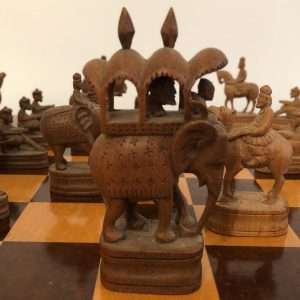
Antique Indian elephant chess piece representing the king.
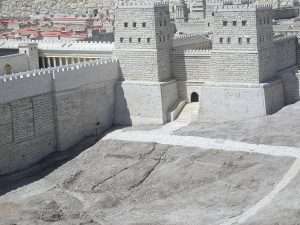
A corner of the Temple Mount.
N.B. One of which had the pommel made from "the tooth of a sperm whale with bits of ivory." ['Walking Britains Roman Roads: Ermine Street'].
The pommel serves as a counter weight.
Side note: "In 1831, a small wooden trove was discovered in a “kirst” (a stone tomb) on the Isle of Lewis in Scotland’s Outer Hebrides. Inside the trove were 78 figurines portraying warriors, kings, horsemen, queens, and bishops, which were later identified as chess pieces and attributed to Viking artisanry.
A 12th-century artisan carved these pieces from Walrus tusk ivory and whale teeth. They were then brought by raiders or merchants to Lewis. Where the Lewis chessmen were originally made remains an enduring mystery due to the fact that Viking settlements peppered much of Scandinavia and the British Isles at this point in history."
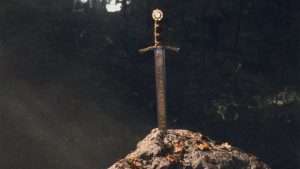
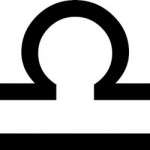
Libra.
Continued: Cetus (/ˈsiːtəs/) is a constellation, sometimes called 'the whale' in English. The Cetus was a sea monster in Greek mythology which both Perseus and Heracles needed to slay. Cetus is in the region of the sky that contains other water-related constellations: Aquarius, Pisces and Eridanus. Cetus may have originally been associated with a whale, which would have had mythic status amongst Mesopotamian cultures. It is often now called the Whale, though it is most strongly associated with Cetus the sea-monster, who was slain by Perseus as he saved the princess Andromeda from Poseidon's wrath. It is in the middle of "The Sea" recognised by mythologists, a set of water-associated constellations, its other members being Eridanus, Pisces, Piscis Austrinus and Aquarius.[9]
Cetus has been depicted in many ways throughout its history. In the 17th century, Cetus was depicted as a "dragon fish" by Johann Bayer. Both Willem Blaeu and Andreas Cellarius depicted Cetus as a whale-like creature in the same century. However, Cetus has also been variously depicted with animal heads attached to a piscine body.
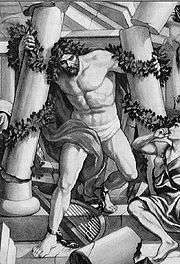
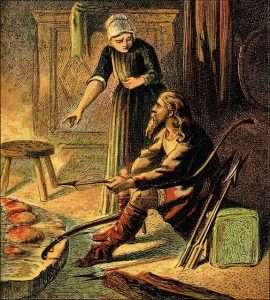
Leavened or UNleavened?
Continued: One body whose chief religious emblem was the vine marched, or sailed, along the South Coast of Asia Minor, halted awhile in Milyas, the old name for Lycia, invaded Greece a little before the arrival there of the Indo-European Achaeans from the north, and occupied Argos in the Peloponnese, the chief shrine of the Horned Moon-goddess Io. The Cadmean invasion came later: it seems that a Canaanite tribe originally known as the Cadmeans, or Easterners, had occupied the mountainous district on the frontier of Ionia and Caria, which they called Cadmea; whence they crossed the Aegean and seized the coastal strip facing Euboea, excellent as a naval base, which was thereafter also called Cadmea....
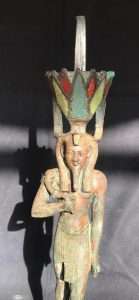
From the 'waters' of creation {Self becoming} - a lotus flower.
The 'lilies' are the red anemones that sprang up from the drops of blood that fell from Adonis's side when the wild boar killed him. The apple is the Sidonian (i.e. Cretan) apple, or quince, sacred to Aphrodite the Love-goddess, and first cultivated in Europe by the Cretans. The true apple was not known in Palestine in Biblical times and it is only recently that varieties have been introduced there that yield marketable fruit. But the apple grew wild in ancient times on the Southern shores of the Black Sea, the provenience of the other trees of the series, and around Trebizond still occasionally forms small woods. It also occurred in Macedonia—the original home of the Muses—and in Euboea where Hercules received the injury that sent him to the pyre on Mount Oeta; but in both these cases may have been an early importation....
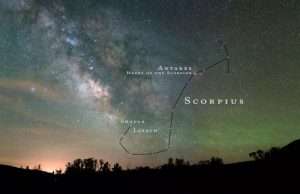
The tail end of the ''stinger'' = two swimming ducks.
'I knew that Pan was the son of Penelope, but your version is a great improvement on it. Penelope, you see, is not really Ulysses' wife except in a manner of speaking; she is a sacred bird, the penelops or purple striped duck. So again, as in the Dryope version of his parentage, Pan is born from a bird—which explains the legend that he was perfectly developed from birth, as a hatched chicken is. Now to come to the suitors, by what I fear will be a longish argument. I postulate first of all that the Palladium is made from the bones of Pelops, that is to say from the ivory shoulder-blades of porpoises, a suitable and durable material, and that it is a phallic statue, not the statue of a goddess. I support my thesis by the existence, until a few years ago, of another sacred shoulder-blade of Pelops in the precinct which his great-grandson Hercules built in his honour at Olympia. Now, according to the myth, Pelops had only one sacred shoulder-blade, the right one; yet nobody has ever questioned the genuineness either of the relic at Olympia or of the Palladium.
Side note: A Shamanic ritual in Attila's times included: An oracle consulted by Attila prior to any battle included reading "the cracks that formed on a sheeps shoulder blade when it was placed into a fire." + "Probably originated in China and is still ongoing with the nomads in Mongolia today." ['Attila's Forbidden Tomb' / Part 2].


'Hung'.
Continued: The history of the Olympian blade is this. During the siege of Troy the Greeks were told by an oracle that the only offensive counter-magic to the defensive magic of the Palladium preserved in the Citadel of Troy was the shoulder blade of Pelops which a tribe of Pelopians had taken to Pisa in Italy. So Agamemnon sent for the thing, but the ship that was bringing it to him went down off the coast of Euboea. Generations later, a Euboean fisherman dragged it up in his net and recognized it for what it was—probably by some design carved on it. He brought it to Delphi and the Delphic Oracle awarded it to the people of Olympia, who made the fisherman its pensioned guardian. If the bone was the shoulder-blade of a sacred porpoise, not of a man, the difficulty of Pelops's having had more than one right shoulder-blade disappears. So does the difficulty of believing that when boiled and eaten by the gods he came alive again—if the fact was that a new sacred porpoise was caught and eaten every year at Lusi by the devotees of Deo. Does all this sound reasonable?'

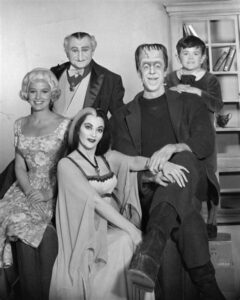
Spot the difference?
Side note: "In Ancient Greek ketos (κῆτος, plural kete/ketea, κήτη/κήτεα[1]), Latinized as cetus (pl. ceti or cete = cetea[2]), is any huge sea monster.[3] According to the mythology, Perseus slew a cetus to save Andromeda from being sacrificed to it. The term cetacean (for whale) derives from cetus. In Greek art, ceti were depicted as serpentine fish. The name of the mythological figure Ceto is derived from kētos. The name of the constellation Cetus also derives from this word....
In Etruscan mythology, the Cetea were regarded as psychopomps, being depicted frequently on sarcophagi and urns, along with dolphins and hippocamps.
The monster tannin in the Hebrew Bible has been translated as Greek kētos in the Septuagint, and cetus in the Latin Vulgate.
"For as Jonah was three days and three nights in the belly of a huge fish, so the Son of Man will be three days and three nights in the heart of the earth."[28]
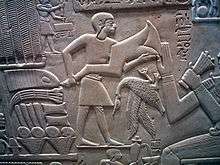
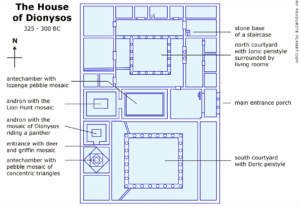 Continued: The classicist Barry B. Powell has proposed that Euboea may have been where the Greek alphabet was first employed, c. 775–750 BC, and that Homer may have spent part of his life on the island.[8]
Continued: The classicist Barry B. Powell has proposed that Euboea may have been where the Greek alphabet was first employed, c. 775–750 BC, and that Homer may have spent part of his life on the island.[8]
Alpha is the first Greek letter. It is based on the Hebrew word aleph, which comes from the word eleph, meaning “ox.” Beta is the second Greek letter. It comes from the Hebrew beth, meaning “house.”
Linear A was the primary script used in palace and religious writings of the Minoan civilization. It was succeeded by Linear B, which was used by the Mycenaeans to write an early form of Greek. It was discovered by the archaeologist Sir Arthur Evans in 1900. No texts in Linear A have yet been deciphered.
'Comb' to enlarge.
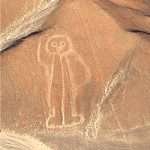
Satchel?
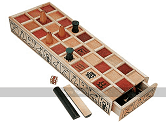
The 'middle' way.
Analogy: ''Night and day, summer and winter, left and right, up and down, are all natural pairs, neither one being dominant over the other. That is the main objective of following the Middle Way, a road of total balance, both within and without, physical and spiritual....This has been referred to as the Bridge of the Sword Blade, or the Knife Edge, and turns up in the Arthurian legends. The path to the light has always been narrow, crossing the Abyss by a slendor and shaking rainbow bridge, built only of your Will to cross. Below is what you have 'evolved' from, the cast- off skins of your previous beings, and on your back, like the Fool of the Tarot deck, is a satchel {'bag/basket'?} with all the good you may achieve, HUNG from your 'wand' {'hazel'?}, and bound with a cord of your intentions.'' [Page 151 'The Path Through the Labyrinth' / M. Green].
'Thread' of logic.

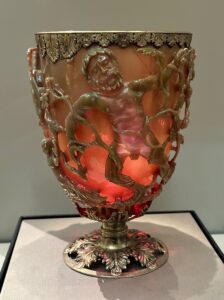
The Lycurgus Cup: Late Roman Empire, AD 300s. This cage-cup is incredibly rare. Its glass contains tiny amounts of gold and silver which cause it to turn from opaque green to translucent red when light is shone through. It may have been part of a wealthy Roman's banqueting set, making its imagery of Dionysus, Greek god of wine, highly appropriate. Its green and red qualities may even have been intended to evoke white and red wine. Alternatively, it may have been used as a lamp because the gilded silver rim and foot were probably added in the late 1700s. Formerty in the collection of Lord Rothschild, purchased with the sid of the An Fund, 1958,12021.
Side note: Orange wine, also known as skin-contact white wine, skin-fermented white wine, or amber wine,[1] is a type of wine made from white wine grapes where the grape skins are not removed but stay in contact with the juice for days or even months, as is more typical with red wines.[2] This contrasts with conventional white wine production, which involves crushing the grapes and quickly moving the juice off the skins into the fermentation vessel. The skins contain color pigment, phenols and tannins that would normally be considered undesirable for white wines, while for red wines skin contact and maceration is a vital part of the winemaking process that gives red wine its color, flavor, and texture.[3] Orange wines tend to be natural (a.k.a. minimal intervention) wines.
The International Organisation of Vine and Wine describes orange/amber wine as "White wine with maceration" and prescribes the minimum duration of the maceration phase to be 1 month. In the USA, Marlo Anderson, founder of the registered trademark “National Day Calendar”, has deemed the 6th of October to be National Orange Wine Day.
 Continued: "Legend says Atilla believed he had a sword that belonged to the god of war." ['Attila's Forbidden Tomb'].
Continued: "Legend says Atilla believed he had a sword that belonged to the god of war." ['Attila's Forbidden Tomb'].
'Gordian Knot'.
Question. The Bridge of Sirat?
'Mountain HIGH. Valley LOW'.
Landscape equivalent of something: "Gebel el-Silsila or Gebel Silsileh "Chain of Mountains" or "Series of Mountains"; Egyptian: ẖny, Khenyt, Kheny or Khenu - "The Place of Rowing"; German: Dschabal as-Silsila - "Ruderort", or "Ort des Ruderns" - "Place of Rowing"; Italian: Gebel Silsila - "Monte della Catena" - "Upstream Mountain Chain") is 65 km north of Aswan in Upper Egypt, where the cliffs on both sides close to the narrowest point along the length of the entire Nile. The location is between Edfu in the north towards Lower Egypt and Kom Ombo in the south towards Upper Egypt. The name Kheny (or sometimes Khenu) means "The Place of Rowing". It was used as a major quarry site on both sides of the Nile from at least the 18th Dynasty to Greco-Roman times. Silsila is famous for its New Kingdom stelai and cenotaphs. '' [Wiki].
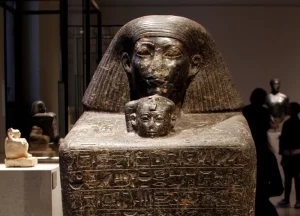
Shock of 'hair'?
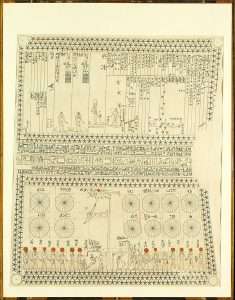
Astro ceiling in Senenmut bare tomb chamber. 'Folded'?
And/or: To-day we will speak of the small octave between the Sun and the Moon. This octave created by the Intelligence of the Sun sounds three notes on the Earth, La, Sol, Fa, which represent the living machine called Organic Life on Earth, of which Man is a part. At present we will not speak of the meaning of the different notes of this small octave. What must be first understood is that Man does not appear in the great octave of creation but in the little side octave proceeding from the Sun. Man Is a special creation within the Ray. Let us now try to grasp why Man appears and why the small octave is necessary.
The reason why the Intelligence of the Sun creates this Small octave is to fill the gap or place of “missing semitone” between Fa and M/in the Great Ray, due to the nature of the Law of Seven. Unless something were created at this point the force passing down the Ray from the Absolute could not pass freely to the Earth and Moon. A shock is necessary at this point owing to the nature of the Law of Seven. This Law governs the order of creation and brings , about conditions at certain points where something must be added in the nature of a shock. The Law of Seven is therefore sometimes referred to as the Law of the Shocks. Understand this clearly: certain shocks are required at certain points in the unfolding or progress or evolution of anything.
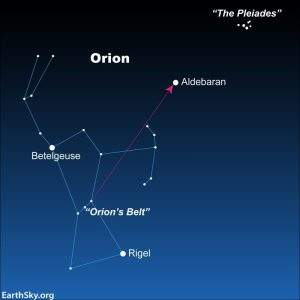
Pleiades: The Seven Sisters. The name, Pleiades, comes from Ancient Greek: Πλειάδες.[17] It probably derives from plein (πλεῖν 'to sail') because of the cluster's importance in delimiting the sailing season in the Mediterranean Sea: "the season of navigation began with their heliacal rising".[18] In Classical Greek mythology the name was used for seven divine sisters called the Pleiades. In time, the name was said to be derived from that of a mythical mother, Pleione, effectively meaning "daughters of Pleione".[19] In reality, the ancient name of the star cluster related to sailing almost certainly came first in the culture, naming of a relationship to the sister deities followed, and eventually appearing in later myths, to interpret the group name, a mother, Pleione.[20]
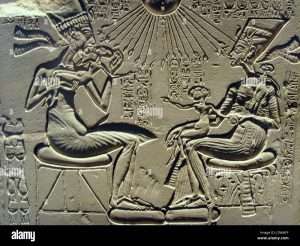
From a different perspective.
The Intelligence of the Earth or the Planets is not great enough to create anything to act as a shock at this point. The Intelligence of the Sun is needed. But the Sun, in creating the small octave, has, two objects which it is essential to grasp and distinguish between very clearly. One object is to create a sensitive transmitting machine between the great Notes Fa and Mi in the Great Ray to enable the force to pass to the Earth and Moon at the termination of the Ray. From this point of view Organic Life, including Man, exists only for the purposes of the Ray and its creation is due to the nature of the Law of Seven, which causes certain difficult or narrow places to appear in the order of creation. If this were the only object Man’s situation would be one in which as a part of this transmitting machine he must always serve the Ray and its evolution, which takes place over immense periods of time.
'Gaps/voids'?
The other object is connected with the Sun itself. In creating the small octave, the Sun is not merely creating on behalf of the Ray itself to fill a missing place, but is also acting for itself. The Sun wants something apart from the needs of the Ray of Creation. It is here that the possibilities of Man are found. Let us now think of this idea which it is of such fundamental importance to understand in this Work. The Intelligence of the Sun wants something for itself in creating Man on Earth, quite apart from the necessities of the Great Ray. What does it want? It wants Man to ascend from the level of the Earth to the level of the Sun. For this reason it creates Man as something incomplete, as an unfinished being. In what sense incomplete?
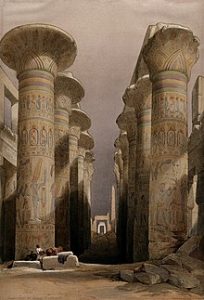
Egyptian equivalent = Amun-RA. Karnac. The middle ground.

In the form of 'two triangles'. Above/below. Fire/water. That same shape that can be seen on the 'hind quarters' {left} of the 'headless' Sphinx on the east side at Gebel el Silsila. Question. What god/goddess represents ''an hour''?
In regard to being a part of Organic Life, serving the purposes of the Ray of Creation he is complete and nothing more is required of him than the life he ordinarily leads. He is capable of living on Earth as he is. He is then said (in the Work) to serve Nature. But in regard to his real origin from the Octave from the Sun he has another destiny locked up in him. In regard to this destiny Man is unfinished, incomplete, because the Intelligence of the Sun has created him for another reason and has put in him, apart from what is necessary to serve Nature, other powers and possibilities. That is, Man has in him far more than is necessary for the purposes of serving Nature. In speaking of Nature here what is meant is all Life on Earth—all that we see around us on the Earth, the life of plants, animals, trees, fishes, and also the life of mankind, with all its struggles, all the killing, pain, birth and death, which, all together, make up this perpetual motion machine called Organic Life created by the Sun to transmit influences from the upper to the lower part of the Ray of Creation. {'Psychological Commentaries on Gurdjieff and Ouspensky' / M. Nicoll}.
Remember symbolic!
.................
.........
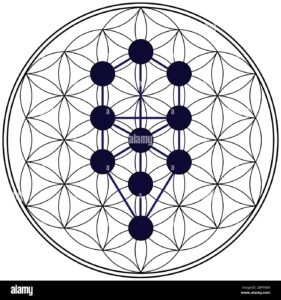
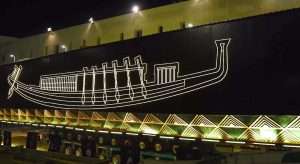
The cedar boat of Khufu.
Refresher: The name "Isis" is especially used in the context of rowing at the University of Oxford. A number of rowing regattas are held on the Isis, including Eights Week, the most important Oxford University regatta, in the Trinity term (summer), Torpids in the Hilary term (early spring) and Christ Church Regatta for novices in the Michaelmas term (autumn). Because the width of the river is restricted at Oxford, rowing eights normally have a staggered start near Donnington Bridge and must then aim to "bump" the eight in front (i.e. catch up and touch or overlap with it sufficiently). The leading eight aims to "row over" (i.e. finish the race without being bumped).
There used to be ornate wooden barges on the river bank at the southern end of Christ Church Meadow to house rowing facilities and for viewing races. Now the barges are gone and there are boathouses instead a little further down the river near the confluence with the River Cherwell. Poplar Walk in Christ Church Meadow is used as a route to and from the boathouses.
The name "Isis" is also used for the men's second rowing eight of Oxford University Boat Club, who race against Goldie, the men's second crew of the Cambridge University Boat Club, before the annual Oxford vs. Cambridge Boat Race on the Thames in London.
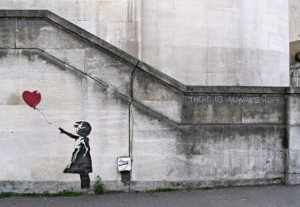
North or south wind?
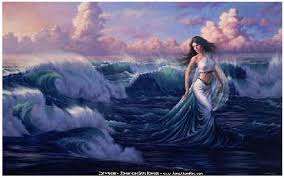
Eurynome.
In a rowing crew, the coxswain (/ˈkɒksən/ KOK-sən; colloquially known as the cox or coxie) is a crewmember who does not row but directs the boat.[1] The coxswain sits facing the bow, unlike the rowers, and is responsible for steering the boat and coordinating the power and rhythm of the rowers. The coxswain's role while on the water is similar to that of an assistant coach or team captain, and they are sometimes also called upon to implement the training regimen or race plan.
In most racing, coxswains may be of either sex regardless of the sex of the rowers. Often they are women, since women are more likely to be near the ideal weight of a cox, which is 125 lbs for USRowing and 55 kg for World Rowing (see Sex, and Weight, below).[2]
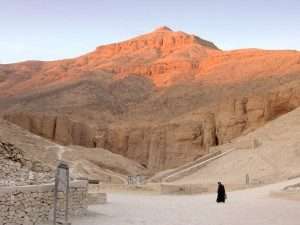
'She who loves silence'.
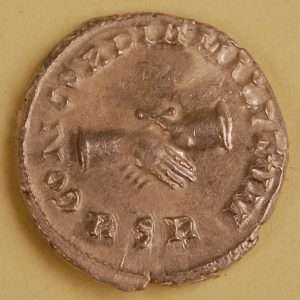
Reverse of a Carausius silver denarius from the Hoard, showing two clasped hands (symbolising the unity of the ruler and the army), alongside the abbreviation 'RSR'. This alludes to a line from Virgil's Eclogues - Redeunt Saturnia Regna or "The Golden Ages have returned".
'Twentyfive'.
And/or:"God then had mercy on him, and the storm wind arrived and informed him that it had been the storm wind which had carried the King’s Daughter to the mountain and castle. The giant then gave him a purse from which he could take any money he needed, so that lack of money would not be an obstacle. The viceroy then went there, and worked hard to devise a plan until he found the King’s Daughter. Happy is he."
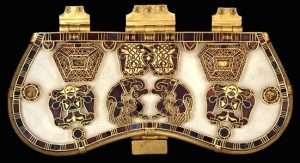
Sutton Hoo purse clasp: Wolfs / eagles and ducks.
Footnote: Purse. Keli in both Hebrew and Yiddish (see Sichoth HaRan 193). Literally, a vessel or a cup (Rabbi Rosenfeld). Some say that this vessel is trust in God (bitachon); if one has such trust, he will be supplied with all his needs (Oneg Shabbath, p. 517; see Likutey Moharan 76). Others say that it is charity; the more one gives, the more God gives him back (Rabbi Rosenfeld, tape). However, it seems that the purse here is the Torah in its entirety. One can constantly take merit out of the Torah, and it is never empty. This is the “precious vessel" (k/i chemdah) that God gave the Israelites (Avoth 3:14; Midrash Shmuel, ad. loc.). This is also the coin which can be used on the mountain of gold, since the Torah “is more precious than gold and fine gold” (Psalms 19:11; see Tosfoth Yom Tov on Avoth). From this purse one can get merit and good deeds, which are more valuable than anything on the mountain of gold. {'The Lost Princess' Rebbe Nachman}.

The middle ground.
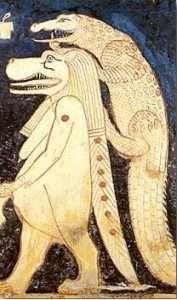 N.B. "Mount Sinai is a 2,285-metre (7,497 ft), moderately high mountain near the city of Saint Catherine in the region known today as the Sinai Peninsula. It is surrounded on all sides by higher peaks in the mountain range of which it is a part."
N.B. "Mount Sinai is a 2,285-metre (7,497 ft), moderately high mountain near the city of Saint Catherine in the region known today as the Sinai Peninsula. It is surrounded on all sides by higher peaks in the mountain range of which it is a part."
Try Hoar's Way for an alternative viewpoint.
Razor-back? and/or the 'back' of a crocodile...as a means?
And/or: ''It is the 'mountains brought low' in order that 'every valley should be filled'...'' {Luke 3:5}. Taken from the book 'Her=Bak: Egyptian Initiate' Page 364].
Side note: History Channel’s ‘Alone‘ is a reality series wherein the contestants try to stay alive, on their own, in some of the most extreme and imperiled areas around the globe. By following the self-documented daily struggles of 10 self-proclaimed survivalists as they dwell in the wilderness for as long as possible using only a limited amount of resources, this series is as clever as it is terrifying. So now that it’s been a while since the installment came to an end, let’s look back and discern what the winner of season 7, Roland Welker, is up to today, shall we?
Continued: As one example: "Applied symbolique can be compared to the Bridge of Sirat in the Islamic Quran....
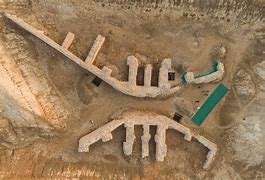
Bridging a gap.
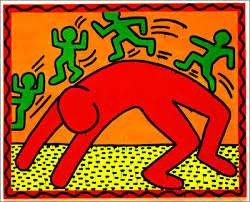
Bridge over troubled waters?
It is as wide as a razor's edge, on either side is a yawning gulf of perdition {'void'?}. One precipice is the mentality of logical or mathematical reason - the other of superstition.'' [Page 31 'The Egyptian Miracle: An Introduction to the Wisdom of the Temple' / R. A. Schwaller de Lubicz].
''Crossing the Sirat Bridge depends on everybody's light. Some will cross it in the twinkling of an eye; some, like lightning; some, like a falling star; some, like a running horse. He who has very little light will creep facedown. His hands and feet will slip, and he will cling to it again. At long last, he will break free from it by creeping and creeping.'' [Tabarani / Wiki].
'See' {twinkling?} anything?
Stirling Bridge to enlarge.
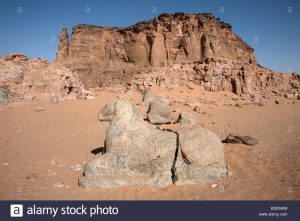
The holy mountain at Jebel Barkal. Why? Flat top?
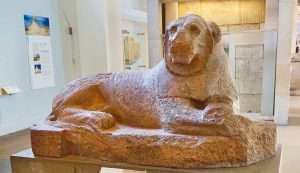
" I had wanted to visit the sites linked to the Soleb Lions (also known as the ‘Prudhoe Lions’) at the British Museum ever since childhood. I would hold my grandfather’s hand as we stood and playfully growled at these two realistic-looking red granite lions. The lions had been moved at least once in antiquity – along with six black granite rams – {'twentyfour' in total. 'Twentysix' when two lions included?} - to Gebel Barkal {'Fourth' cataract} in Sudan by the kings of Kush. They had originally been carved during the reign of Amenhotep III for his Temple of Amun, located between the Second and Third Nile Cataracts at Soleb. Various inscriptions had been added to them during the reigns of Amenhotep IV, Tutankhamun, Ay, and the Meroitic king Amanislo (the Ethiopian king Amonasro in Verdi’s opera Aïda). It is widely believed to be Amanislo (c.260-250 BC) who moved them from Soleb to Gebel Barkal.... The ancient settlement around Gebel Barkal was known as Napata, and it was one of the most important sites for at least two of the defining eras of the Kingdom of Kush. Situated around 370 kilometres north of Khartoum, the flat-topped ‘Pure Mountain’ (as the ancient Egyptians called it) is 1.5 kilometres north of the Nile. It has a very distinctive free-standing pinnacle on the southern edge, which bears a striking resemblance to a colossal uraeus (the stylised rearing cobra used as a symbol of sovereignty and divine royalty by the ancient Egyptians) protecting the god Amun inside the holy mountain.."
During the 18th dynasty the Egyptians switched from limestone to sandstone. At this time the quarries at Gebelein were not yielding as much limestone as before. Gebel el-Silsila became a source of sandstone. The use of this stone allowed for the use of larger architraves.
Many of the talatats used by Akhenaten were quarried from here, and used in buildings at Luxor and Amarna. A stela from the early part of Akhenaten's reign shows the king offering to Amun beneath the winged sun-disk. The inscription records that stone was cut for the great Benben of Harakhty in Thebes. Akhenaten's sculptor Bek oversaw the opening of a stone quarry here."
Talatat are stone blocks of standardized size (c. 27 by 27 by 54 cm, corresponding to 1⁄2 by 1⁄2 by 1 ancient Egyptian cubits) used during the 18th dynasty reign of the Pharaoh Akhenaten in the building of the Aton temples at Karnak and Akhetaten (modern Amarna). The standardized size and their small weight made construction more efficient. Their use may have begun in the second year of Akhenaten's reign. After the Amarna Period talatat construction was abandoned, apparently not having withstood the test of time." [Wiki].
Hall of Karnac made of sandstone. Coincidence or a meaningful one?
Question. Who 'created' Karnak?
Sidfe note: "The ‘pinnacle as uraeus’ concept is depicted in a wall scene inside the rock-cut Temple of Mut of Napata. Mut and a ram-headed version of Amun are seen seated inside a shrine representing the mountain; the uraeus, wearing a solar disc, projects out from the front much like the pinnacle above it. Further into the interior of the temple we see the 25th {'Twentyfive'} Dynasty king Taharqo depicted on two recently restored bas relief wall panels, in yellow ochre and Egyptian blue on gypsum mortar. The king is shown making an offering to differing forms of Amun – a demonstration of his rule over the Two Lands. On the left (downstream journey) wall he is offering to the human-headed Amun of Karnak, and on the right (upstream journey) wall he is offering to the ram-headed Amun of Gebel Barkal, who was known as ‘Amun of Napata who lives inside the Pure Mountain’.....The location {of the lions} had been documented by several early 19th-century visitors as being near to the north-west outer wall of the Royal Palace of Napata (Reisner B1200)."
'Kiosk' to enlarge.
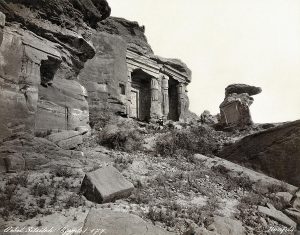
The Short Way?
Something hinted at: "Our adept means hear to speak of the first sulphur, which is the gold of the sages, the green, unripe fruit of the tree of knowledge. While the Latin phrase betrays some disappointment relative to a normal result, which many would like very much to obtain, it is because by means of this 'sulphur' the transmutation can no longer be hoped for. Indeed the philosophical gold, is not the 'stone', and Philalethes carefully warns the student that it is only its first matter. And since this sulphur principle, according to the same author, requires an uninterrupted work of approximately 'one hundred and fifty' days {'153'?}, it is logical to think that such a result could not satisfy the artist who anticipated reaching the 'elixir' in one bound, as it can happen in the short way." [Page 340 'The Dwellings of the Philosopher' / Fulcanelli].
'First conscious shock'?
Thebes/Karnak ?
Golden Horn? {Istanbul}.
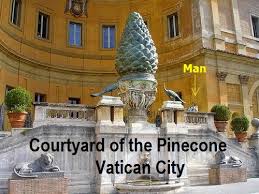
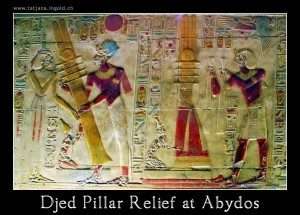
''Plaster''?
From a different perspective {from a different 'angle' - 90 or 180?}: "The Pineal gland, the dynamo that runs the organism of man, is composed of 'sand' plus a cement, an ointment, a smear, found, as has been explained, in the spinal cord {djed?} - also to some extent, in all parts of the body. When this 'cement' is wasted, as the Prodigal Son wasted his substance in riotous living, there being a deficiency in this precious 'oil'....He lacks the sand or grit....The mineral salts of blood were called sand or salt by the Greeks. The cell salts that are found in the pineal gland are chiefly potassium phosphate....In Revelation, the pineal gland is called ''the white stone''. In Biochemistry, the phosphate of potassium is given as the birth salt of Aries people. Those who build their house upon a rock are they who conserve the substance that unites with the sand - cell salts - and thus form the 'rock' upon which a body may be built....'Rock of ages, cleft for me, let me hide myself in thee'..." [Page 141/2 'God-Man: The Word Made Flesh / G. Carey and Inez Perry].
'Cleft' = ''crack''?
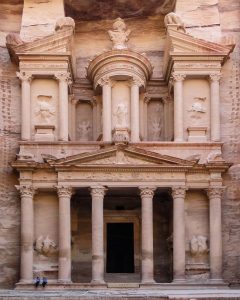
Carved from sandstone rock FACE. Entry to which can ONLY be achieved along an old NARROW dried up river bed between two steep cliff faces. Question. ''Facade'' / ''H'' / ''six'' links? Watford GAP?
REFRESHER: "We don't know the purpose of the white quartz pebbles. There found in mortuary context from pre-historic periods onward and also medieval cemeteries. There's a passage in the Bible - Revelations- about a person who has found Christ is given a white stone - and in that - a new name." [Same program].
Something ''Set in stone''?
'Peter' ?
And/or: "In Bible alchemy, Libra represents Reuben, the first son of Jacob. Reuben means Vision of the Sun. In the symbolism of the New Testament, Libra corresponds to the disciple Peter. Peter is derived from Petra, a stone or mineral." [Page 35 'The Zodiac and the Salts of Salvation'].
Corner stone?
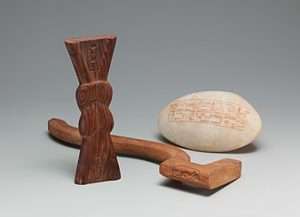
Someone's new name?
Side note: Left – Knot Amulet. Middle – Meskhetyu Instrument. Right – Ovoid Stone.
''On the knot amulet, Hatshepsut's name throne name, Maatkare, and her expanded name with Amun are inscribed. The Meskhetyu Instrument was used during a funerary ritual, Opening of the Mouth, to revive the deceased. On the Ovoid Stone, hieroglyphics was inscribed on it. The hieroglyphics translate to "The Good Goddess, Maatkare, she made [it] as her monument for her father, Amun-Re, at the stretching of the cord over Djeser-djeseru-Amun, which she did while alive." The stone may have been used as a hammering stone.'' [Wiki / Hatshepsut].
''Set in Stone''? Help section to enlarge.
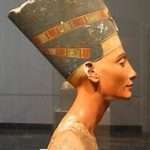
Flat top ? 'East-west'? 90 degrees? Queen of the 'horizon'?
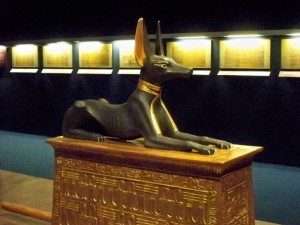 Continued: Understanding the above, gives clues {as a 'lead' i.e., as an example by way of the Jackal headed god}- to the information within Mr Bauval and co. book 'Black Genesis', an elongated hill in the S/W corner of the Egyptian desert..."a flattened top with a very noticeable depression or notch in the middle" what the author calls ' Horizon Hill ', and that link to the 'Horizon' hieroglyph, which as he says "was used to denote 'horizon' or, more specifically, the Place of the Sunrise." [Page 142, same book].
Continued: Understanding the above, gives clues {as a 'lead' i.e., as an example by way of the Jackal headed god}- to the information within Mr Bauval and co. book 'Black Genesis', an elongated hill in the S/W corner of the Egyptian desert..."a flattened top with a very noticeable depression or notch in the middle" what the author calls ' Horizon Hill ', and that link to the 'Horizon' hieroglyph, which as he says "was used to denote 'horizon' or, more specifically, the Place of the Sunrise." [Page 142, same book].
A working example {in the present tense and moment of the WORD}: ''I do podcasts about theories and stuff - weird and wonderfull stuff....One of my theories is that i believe hieroglyphs are actually from the future and their basically just emoji's - because we are getting to the point where our words are getting shorter as when we send text messages etc....So i think the pyramids are from the future and its hieroglyphs are just emoji's. Thats how we are going to talk in the future because we cant be bothered to write.'' [Scarlett - 'Pilgrimage' / BBC2 / 2022].

R.I.P.
From a different perspective {and/or a work in progress}: ''Gurdjieff's legominism, i.e., a symbol that somehow encapsulates the meaning of what it is that is to be conveyed to the 'future'. Examples of architectural 'logominisms' are the pyramids of Egypt, the hierothesion of Antiochus and the shrine at Arsemia.'' [Page 257 'Magi: The Quest for a Secret Tradition' / A. Gilbert].
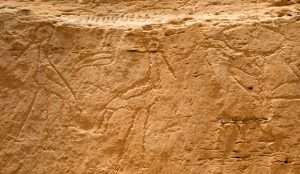
The earliest known 'horizon' symbol. Ibis between two stork birds. Question. What type of ''rock''?
Apply the above to define the following {mind set?}: "There are many pictures of men brandishing spears, which may only represent one figure drawn on many occasions. There are oxen yoked to ploughs, war chariots and wagons, men blowing {'drinking'?} curved horns and people dancing or walking in procession. These can never be completely identified, but the aim is clear. They are part of a seasonal religious ceremony. In some cases animal figures are thought to represent the beasts offered to special gods at special sacrifices {'feast of fools'?} - while the ashes of great fires {death/rebirth?}, below the rocks on which the pictures are engraved, probably indicate the sites of ritual feasts, in the Homeric manner....To a rather later period belong pictures of axes, swords, wheels and sun discs...." [Page 85 'GogMagog'].

Quantity or Quality?
Side note: ''In the ancient world of Egypt {and elsewhere?} - all is symbol, every gesture of life, each ritual of cult, each stela, each monument, every hieroglyph, its colour and emplacement, each figuration, the shape {'form'} of every common object - all obey the law of wisdom that situates each thing in the harmonic site of its cosmic nature....As specific idea, as figure of speech or imagined figuration, the symbol is always more concrete than the idea it evokes. Thus the means, the tool, symbolizes a state or a quality....For example the 'seat' or the throne evoke different ideas of elevation, one physical the other of power; yet the seat in general also evokes the groundwork or foundation. The scythe evokes the function of arresting, of causing to cease, as the sword evokes the function of piercing through or else of separating or cleaving....The staff evokes the idea of striking and punishing, but the act of striking with a staff can evoke a cabalistic idea of the staff itself i.e., Moses striking the 'rock' with a 'wand'. Generally speaking, symbolism is the evocation of an intelligence words can only paraphrase and not directly transcribe." [Page 31-33 'The Egyptian Miracle' / R. A. Schwaller de Lubicz].
Quantity/Quality as a means....?
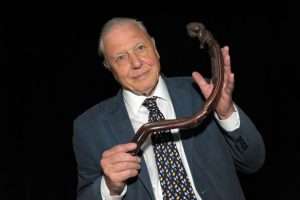
'Head' and 'feet' in stylised form. [The wooden object that is - not the chap in the tie]. Try Part 1. Question. Aries/Pisces?
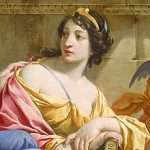
{C}alliope - Chief muse.
Continued: "Caroline, you may not be aware of this, but your name begins with the letter associated with the balance of the number three. Balance is a grace of spirit {'male' or 'female'?}. This is why the horizon stone played such an important part in the Egyptian mysteries. The hieroglyph depicts the meeting of Sun and Earth...This symbol is the only hieroglyphic on the outer wall of the Great Pyramid...The name given to the pyramid was 'Akhet Khufu', which meant ''horizon of Khufu'' - this later term was misunderstood by later Egyptologists, who turned it into the name Cheops. This pregnant symbol is {also?} located above the passageway which pierces into the rock foundations of the vast structure. As a symbol, it survived into modern times - as the symbol for Libra, the cosmic balance, which now consists of three elements...When he had drawn the sigil, he ran the back of his pencil {'lead' link} through the curvature {'arc' / Uas link?} of space between the solar disc and the horizon of earth...'The invisible {unknown quantity?} space is just as important as the Sun and Earth. Do you see how even the most simple-seeming of the arcane symbols are steeped in hermetic antiquity?' ['The Zelator'. Italics/parenthesis, this readers].
Carmenta?
Carolingian Dynasty?
Follow the title of the book to see it from its broader {horizon?} - point of view. That personal inner one.
A working example: ''It was just good measure to use it well''. [Clive James - on life].
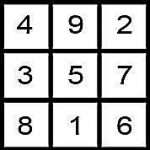
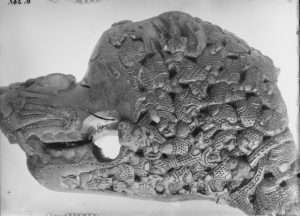
"The Oseberg ship itself is decorated with a more traditional style of animal interlace that does not feature the gripping beast motif. However, five carved wooden animal-head posts were found in the ship, and the one known as the Carolingian animal-head post is decorated with gripping beasts, as are other grave goods from the ship. The Carolingian head represents a snarling beast, possibly a wolf, with surface ornamentation in the form of interwoven animals that twist and turn as they are gripping and snapping."
''The glyph for Libra originally represented a yoke, which I thought was fascinating, in the light of Saturn's exaltation there. I always used to think of the symbol as representing a 'bump in the road', so perhaps Libra brings out the best of Saturn when 'the bumps in the road' of relationship happen." [Page 76 'Saturn, Chiron and the Centaurs']. Try ''yoke''.
''Mr Bump of the Mr Men characters is blue in colour and covered in bandages.''
Amenhotep III and Imhotep to enlarge.
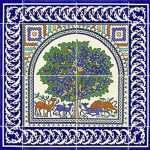 And/or: "In Leo and Virgo lay now the long forgotten asterism Fahne, of which Ideler wrote: 'The Flag is a constellation of the heavens, one part in Leo, one part in Virgo. Has many stars. On the iron {the arrowhead of the staff} in front one; on the flag two; on every fold of the flag, one...Brown repeats a Euphratean inscription: 'The constellation of the 'Yoke' - 'like a flag floated' - although he claims no connection here, and associates the Yoke with Capricorn." [Page 255 'Star Names and Their Meaning'].
And/or: "In Leo and Virgo lay now the long forgotten asterism Fahne, of which Ideler wrote: 'The Flag is a constellation of the heavens, one part in Leo, one part in Virgo. Has many stars. On the iron {the arrowhead of the staff} in front one; on the flag two; on every fold of the flag, one...Brown repeats a Euphratean inscription: 'The constellation of the 'Yoke' - 'like a flag floated' - although he claims no connection here, and associates the Yoke with Capricorn." [Page 255 'Star Names and Their Meaning'].
Interpret those keys to 'see' / connect {yoke?} something further - in relation to the Giza complex. And/or Homers Secret Illiad.
Try ''Libra'' to see if you agree/disagree.
REFRESHER: "The word 'conscience' {''con-science''} contains the idea of balance, for it implies "simultaneous knowing," i.e.,knowledge of the facts of the two scales suspended at the extremities of the beam of the balance. Conscience is neither a product nor a function of character. It is above it. And it is here - and only here - that there begins and there is found the domain of freedom." [Letter viii 'Justice' from the book 'Meditations on the Tarot'].
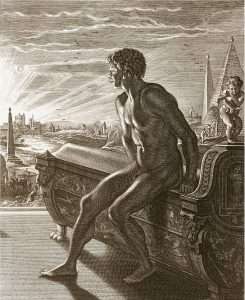
Memnon. 'Sarcophagus' / 'Karnak' / 'Turquoise' / 'garment' to enlarge.
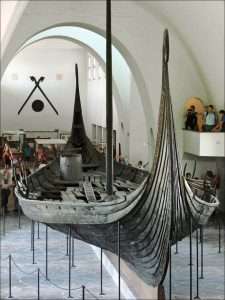
'Triangular'?
A working example: "As Dorn interprets it, this vacillating between the opposites and being tossed back and forth means being contained in the opposites. They become a vessel in which what was previously now one thing and now another floats vibrating, so that the painful suspension between opposites gradually changes into a bilateral activity of the point in the center. This is the 'liberation from opposites,' the nirdvandva of Hindu philosophy, though not really a philosophical development. The experience of the opposites has great psychological significance, for it can be associated with the development of consciousness. This uroboric state can be seen in the early life of a 'child'.....At the birth of the consciousness of mankind stands the experience of the opposites, and the first pair of opposites to appear at the dawn of humanity must have been the primal division between life and death...the tension between the two....the gateway to consciousness.'' [ Page 14 'The Lover and the Serpent' / Llewellyn Vaughan-Lee].
Cro-magnon man V Neanderthal man to enlarge.
Side not: Speculation 'rules the roost' in Ancient Aliens: ''The Power of Three'' {Series 5, episode 14}. Understand this subject to get as close as one can to answer all those convoluted questions and answers - if only in relation to ''three''.

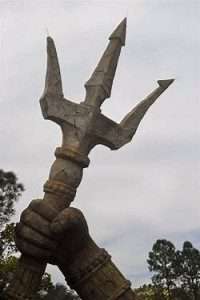
Metal of the mind.
Side note: "It is impossible to study any single system of 'worship' throughout the world without being struck by the peculiar persistence of the triple number in regard to divinity; whether as a group of deities, a triformed or 3-headed god, a mysterious trinity, a deity of three powers, or a family relationship of 3 persons such as Father, Mother and Son...." [Page 16 'Occult Fundamentals and Spiritual Unfoldment. Vol 1].
Continued: Abu Ruash also has that same 'formation', of which a similar symbol can be found above the North entrance of none other than the Great Pyramid. The common factor between all being Mr Djedefre, or more importantly, before those first impressions take hold...what Djedefre represents, i.e.,elder relative to younger. Djedefre in relation to Menkaure. North relative to South. The 'southern' end of which encompassed that 'offset' pyramid. The beginning or start of something.
Question. ''Compass'' in relation to 'encompass' / 'compassion'?
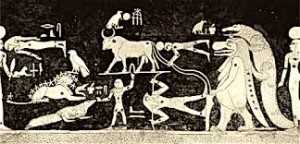 As also mentioned in that same well researched book [if only from the standard [exoteric] point of view, i.e.,without including this subject].... it was the following Dynasty, i.e.,5th...that the 'Horizon' symbol became ingrained. Which gives clues as to Mr Djedefres [and therefore by implication, his families], true status, if only within an understanding of something. Recall what Djedefre represents. That understanding was finally 'realized' in the 5th.
As also mentioned in that same well researched book [if only from the standard [exoteric] point of view, i.e.,without including this subject].... it was the following Dynasty, i.e.,5th...that the 'Horizon' symbol became ingrained. Which gives clues as to Mr Djedefres [and therefore by implication, his families], true status, if only within an understanding of something. Recall what Djedefre represents. That understanding was finally 'realized' in the 5th.
'A grain of wisdom'.
Question. How many grains make a cake?
Funerary cake?
Hence the link to the first 'religious' texts ever found anywhere. The Pyramid texts. What Mr Bauval refers to as the 'Horizon' hieroglyph, others call the 'Son of'. But not yet with that 'full' understanding, i.e.,'heart' or 'bosom' link. ['lower'/ 'higher' link]. Hence the link to the 'sun' in the middle of those two 'points', regardless of whether they be 'mountains' or 'pillars'. Recall what the 'sun' represents, [besides the obvious]. Think about it, relative to what other symbol was included within, non other than King Unas cartouche.
"The destiny of man, as we have said, is to make or create himself. He is, and he will be the son of his works, both for time and eternity." Quote by E. Levi.
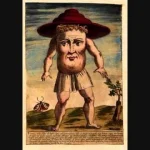
Blemmyes.
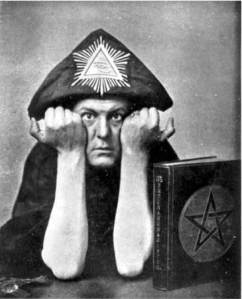
A. Crowley. What's the common factor? + 'Thumb' / 'Pillars' to enlarge.
Analogy of same {principles?}- that very first one - {written in the stars?}: "Homer confirms in Book 19 that Achilles is an astronomical newcomer when he is compared to Odysseus, whose constellation Bootes, had been in the skies for an eternity. Odysseus says: 'Achilles - mightiest of all the Greeks in battle {'struggle' link}, you are better than i, and that more than a little, but in counsel i am much before you, for i am older and of greater knowledge'. Homer is here stating, that Odysseus personal star, Arcturus, is not as bright and powerful as that of Achilles {Sirius and Canis Major}, but is much 'older', for it has been visible from the northern hemisphere since time immemorial." ['Homer's Secret Iliad'].
Elder/younger = Higher/lower? All as a means....?
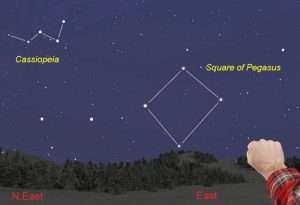 And/or: ''Homer characterized the constellation as ''late in setting''...Minsheu of the 17th century wrote: 'Bootes, or the Carman, is a slow moving star, seated in the north pole'...And all this because as the figure sets in a perpendicular position, eight hours are consumed in its downward progress {'right angle'?} and even then the hand of Bootes never disappears below the horizon {'raised' hand?} - a fact more noticeable in early days than now. The reverse takes place however, at its rising i.e.,in a horizontal position...hence ''all at once'' {'simultaneous'?} of Aratos...The Arabs referred to it as the Digger, or Tearer, analogous to the classic Trencher in the vineyard...but this could be in error {Dionysus link?}. " ['Star Names and Their Meaning' under Bootes].
And/or: ''Homer characterized the constellation as ''late in setting''...Minsheu of the 17th century wrote: 'Bootes, or the Carman, is a slow moving star, seated in the north pole'...And all this because as the figure sets in a perpendicular position, eight hours are consumed in its downward progress {'right angle'?} and even then the hand of Bootes never disappears below the horizon {'raised' hand?} - a fact more noticeable in early days than now. The reverse takes place however, at its rising i.e.,in a horizontal position...hence ''all at once'' {'simultaneous'?} of Aratos...The Arabs referred to it as the Digger, or Tearer, analogous to the classic Trencher in the vineyard...but this could be in error {Dionysus link?}. " ['Star Names and Their Meaning' under Bootes].
''Car'' / ''chariot''?
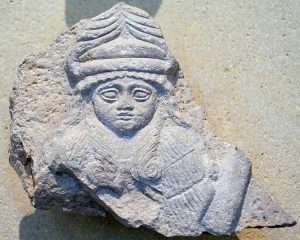
'Triangular' head gear?
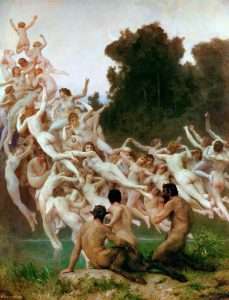
Can u see it?
And/or: ''If you were Celtic, you might know of a constellation called Hu Gardarn {'The mighty'}. Includes Bootes right across the night sky to Auriga - with the Gt. Bear in the middle''. Also known as the 'Plough' by the Celts, a crocodile by the Egyptians and a Hippo by the Mesopotamians.'' ['Mirthy' / July 2022].
''Hu Gadarn (Hu the Mighty) is a supposed Welsh legendary figure who appears in several of a series of Welsh Triads produced by the Welsh antiquarian and literary forger Iolo Morganwg. These triads, which Iolo put forth as medieval works, present Hu as a culture hero of the ancient Britons who introduced ploughing.''
Side note: The story {method?} of Troy {Great Bear} - in relation to the Precession. Orion = Hector and Paris. Achilles = Dog star. His bright armour in relation to 'electrum'. Anything?
Question. What does ''19'' represent?
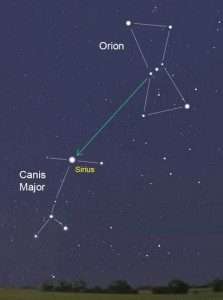 "Analogy of same,i.e.,in the spiritual sense of the word: Different time; different author..."Formally it may be said, my whole being was possessed by egoism. All my manifestations and experiences flowed from my vanity......and from then on there gradually arose in me that ''something'' which has brought the whole of me to the unshakable conviction that, apart from the vanities of life, there exists a ''something else'' which must be the aim and ideal of every more or less thinking man, and that it is only this something else which may make a man really happy and give him real values, instead of the illusory ''goods'' with which in ordinary life he is always and in everything full." [Chapter 10 'Meetings with Remarkable Men'. Mentioned elsewhere].
"Analogy of same,i.e.,in the spiritual sense of the word: Different time; different author..."Formally it may be said, my whole being was possessed by egoism. All my manifestations and experiences flowed from my vanity......and from then on there gradually arose in me that ''something'' which has brought the whole of me to the unshakable conviction that, apart from the vanities of life, there exists a ''something else'' which must be the aim and ideal of every more or less thinking man, and that it is only this something else which may make a man really happy and give him real values, instead of the illusory ''goods'' with which in ordinary life he is always and in everything full." [Chapter 10 'Meetings with Remarkable Men'. Mentioned elsewhere].
That logic again. That logic that defines and verifies this subject. REGARDLESS of whether it be fact or fiction.
Hebrew equivalent = the word...’Sefirah’, [ ‘Mystical Shape of the Godhead'. Chapter three. G.Scholem ]. Or the Pagan ‘Dykes’, [ unconscious aspect ]. Christian equivalent = ‘Prayer’, i.e., benefit of. In relation to...a repetitive ‘habit’ / discipline. Three examples of same...but from different perspectives. Spot those common links...’The art of True Healing’. By I. Regardie...’Esoteric Healing’. By A. Hopking...’Born of Water and Spirit’. By A. Lohr.
A working example: ''The name Jason is a typically masculine name that is believed to have Greek and Hebrew origins. Jason is a classic and traditional Greek name. In Greek, the name means “healer.” This is from the Greek word “iaomai” which means “to heal.” The origin of the name can also be traced to Greek mythology.
The story goes that Jason, a great Thessalian hero, led the Argonauts, a band of heroes in Greek mythology, on a quest for the Golden Fleece, in order to get back the throne from his Uncle Pelias, who overthrew Jason’s father as the king of Ilocos. Jason also married Medea, a sorceress who helped him get the Golden Fleece and murder his uncle.
In Hebrew, Jason means “the Lord is salvation.” In the bible story, Jason housed Paul and Silas when they were in need of shelter. In English, Jaye is a feminine variation to the name Jason.'' [Internet].
Or even ‘Sister Wendy’..and therefore by implication...her profession. As an example of same. Think about it. Together with 'The Brotherhood of the Common Life'. Mentioned elsewhere.
That link to the ten Commandments of Hebrew fame or Jurisprudence and Kalam...in relation to the Sharia of Islam culture to name but a few. All encompassed and re-evaluated in what Mr Al-Ghazali describes as... "the lowland of servile conformism ...to the highland of independent investigation { 'Jurisprudence' link}''... In relation to striking a balance. To achieve an equilibrium. In all things that we do...and come to believe in.
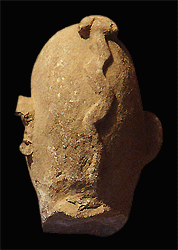
Back of the 'head' ? Try ''64'' for something extra. Part 2.
The benefit of the routine of getting used to the positives as opposed to those negatives...on a day by day basis. That potential of. In relation to a ’Journey’. Hence the link to the word [and its application]... 'meditation'. Its most basic interpretation,[some may say crudely] could be... if one has to 'focus' on anything, then focus on the 'positive' stuff as opposed to its alternative. Chooses are made every day, whether its learning something new, or still coming to terms with something 'old', ['youngest' and/or 'eldest' links]. That 'chose' one way or the other has to be made, consciously or otherwise. Whether we want to, or not. The only difference, is that this subject makes you aware of that fact... and its supposed relevance along a path or 'journey'. Represented by higher/lower.
Side note: ''So lets go Aurora hunting with our positive hats on.'' [Michaela Strachan / 'Under The Xmas Sky' / BBC2 / 2018].
Side note: The English word 'focus' comes from the Latin for 'fireplace'. ['The Chase' / ITV / 31.1.22].
Hestia to enlarge.
Symbolic of the word ‘Treasure’. As an example...The ‘Copper scrolls’ were found {''AT the back of a cave''} alongside the ‘Dead sea scrolls’. The ’treasure’, [ in their opinion ]...is that which was found within that ‘Inner landscape’ of those words within those pages rather than in the physical sense...something that might be found...buried. A subtle link to exoteric/esoteric and/or physical/spiritual differences.
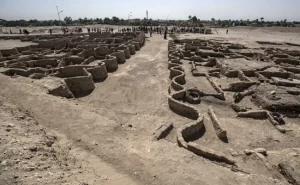
A new city found when looking for Tutankhamuns mortuary temple {death/rebirth?}. The blue stuff found within it. Enlarged throughout.
Each individual would see the word ‘treasure’ in a different light. Another example could be... "The story of Gilgamesh, the fourth king of Uruk, is in part about what people felt as they adapted to city living. This strange and wonderful story was lost for thousands of years until 1872, when George Smith, a scholar at the British museum, announced he had deciphered tablets excavated in the library of the last Assyrian king. Inscribed on Lapis lazuli, it had been locked up in the temple of Venus inside a copper box." [Chapter 15, 'The Sacred History'. Mentioned elsewhere].
And/or..."Give me a copper coin and I'll tell you a golden story,'' is in part responsible for the more popular title of the Golden Ass. This may be so, but we would also suggest that there is an alchemical tinge to this gold. That it is indicative of pure and priceless Mysteries concealed beneath the surface of the tale." [Extract taken from part 4, 'The Rose Cross and the Goddess'. Mentioned elsewhere].
Coincidence or a meaningful one?
Refresher: ''The connection of the Lapis with immortality is attested from very early times. Ostanes {4 BC} speaks of 'the Nile stone that has a spirit'. The Lapis is the panacea, the universal medicine, the alexipharmic, the tincture that transmutes base metals into gold and gravel into precious stones....It cures melancholy etc...'' [Page 101 'Alchemical Studies'].
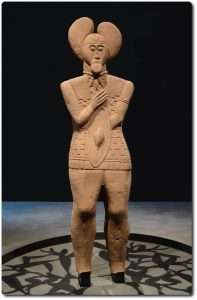
Sad or joy? Bean ears? HOST? What about 'feet'?

'Spirit' or 'Soul' or both?
''The fineness of a precious metal object (coin, bar, jewelry, etc.) represents the weight of fine metal therein, in proportion to the total weight which includes alloying base metals and any impurities. Alloy metals are added to increase hardness and durability of coins and jewelry, alter colors, decrease the cost per weight, or avoid the cost of high-purity refinement. For example, copper is added to the precious metal silver to make a more durable alloy for use in coins, housewares and jewelry. Coin silver, which was used for making silver coins in the past, contains 90% silver and 10% copper, by mass. Sterling silver contains 92.5% silver and 7.5% of other metals, usually copper, by mass.''
Side note: ''Mistletoe is the common name for obligate hemiparasitic plants in the order Santalales. They are attached to their host tree or shrub by a structure called the haustorium, through which they extract water and nutrients from the host plant.
The name mistletoe originally referred to the species Viscum album (European mistletoe, of the family Santalaceae in the order Santalales); it is the only species native to the British Isles and much of Europe. A related species with red rather than white fruits, Viscum cruciatum, occurs in Southwest Spain and Southern Portugal, as well as in Morocco in North Africa and in southern Africa.''

Libra.
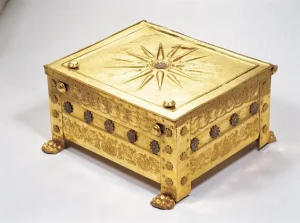
The tomb of Phillip II was found in the modern Greek village of Vergina, the site of Aigai. Objects from the tomb included an ivory head {bedpost}, a gold wreath with myrtle leaves and flowers; a gold quiver cover; a gold larnax, or ossuary, decorated with a sunburst {'SIXTEEN' pointed} or star likely containing Phillips remains; and a gold ornament of the gorgon Medusa.
Continued: ''The word "carob" comes from Middle French carobe (modern French caroube), which borrowed it from Arabic خَرُّوبٌ (kharrūb, "locust bean pod"),[8] which ultimately borrowed it perhaps from Akkadian language kharubu or Aramaic kharubha, or related to Hebrew kharuv.[9] Ceratonia siliqua, the scientific name of the carob tree, derives from the Greek kerátiοn κεράτιον "fruit of the carob" (from keras κέρας "horn"), and Latin siliqua "pod, carob". In English, it is also known as "St. John's bread"[10][a] and "locust tree"[12] (not to be confused with African locust bean).[13] The latter designation also applies to several other trees from the same family. The carat, a unit of mass for gemstones, and a measurement of purity for gold, takes its name from the Greek word for a carob seed, keration, via the Arabic word, qīrāṭ.''
''Holy fruit''?

Reverse of a Carausius silver denarius from the Hoard, showing two clasped hands (symbolising the unity of the ruler and the army), alongside the abbreviation 'RSR'. This alludes to a line from Virgil's Eclogues - Redeunt Saturnia Regna or "The Golden Ages have returned".
The carob (/ˈkɛrəb/ KERR-əb; Ceratonia siliqua) is a flowering evergreen tree or shrub in the Caesalpinioideae sub-family of the legume family, Fabaceae. It is widely cultivated for its edible pods, and as an ornamental tree in gardens and landscapes. The carob tree is native to the Mediterranean region and the Middle East.[1][2] Portugal is the largest producer of carob, followed by Italy and Morocco.
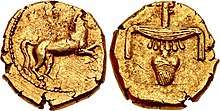
Costly?
In the Mediterranean Basin, extended to the southern Atlantic coast of Portugal (i.e. the Algarve region) and the Atlantic northwestern Moroccan coast, carob pods were often used as animal feed and in times of famine, as "the last source of [human] food in hard times".[3] The ripe, dried, and sometimes toasted pod is often ground into carob powder, which was sometimes used as an ersatz cocoa powder, especially in the 1970s natural food movement.[4] The powder and chips can be used as a chocolate alternative in most recipes.''
Side note: ''Chocolate was the main ingredient of xocoatl, a beverage of the Aztecs.'' ['The Chase'].
Continued: ''The origin of the troy weight system is unknown. Although the name probably comes from the Champagne fairs at Troyes, in northeastern France,[11] the units themselves may be of more northern origin.[citation needed] English troy weights were nearly identical to the troy weight system of Bremen. (The Bremen troy ounce had a mass of 480.8 British Imperial grains.)[9]
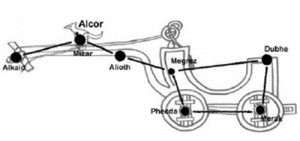
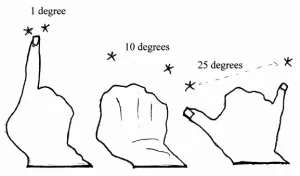 An alternative suggestion is that the weights come from the Muslim domains by way of the Gold Dirhem (47.966 British Imperial grains), in the manner that King Offa's weights were derived from the silver Dirhem (about 45.0 British grains).
An alternative suggestion is that the weights come from the Muslim domains by way of the Gold Dirhem (47.966 British Imperial grains), in the manner that King Offa's weights were derived from the silver Dirhem (about 45.0 British grains).
Side note: ''The name drachma is derived from the verb δράσσομαι (drássomai, "(I) grasp").[n 3] It is believed that the same word with the meaning of "handful" or "handle" is found in Linear B tablets of the Mycenean Pylos.[3][n 4] Initially a drachma was a fistful (a "grasp") of six oboloí or obeloí (metal sticks, literally "spits") used as a form of currency as early as 1100 BC and being a form of "bullion": bronze, copper, or iron ingots denominated by weight. A hoard of over 150 rod-shaped obeloi was uncovered at Heraion of Argos in Peloponnese. Six of them are displayed at the Numismatic Museum of Athens.''
A working example: [The Rebbe] spoke up and said, “ While on my journey I told a story. Whoever heard it had a thought of repentance.” (and this is the story ) .

 There was once a king who had six sons and one daughter. This daughter was very precious to him and he loved her very much. He spent much time with her. One time, he was alone with her on a certain day and he became angry at her. He inadvertently said, “ May the Evil One take you away!”
There was once a king who had six sons and one daughter. This daughter was very precious to him and he loved her very much. He spent much time with her. One time, he was alone with her on a certain day and he became angry at her. He inadvertently said, “ May the Evil One take you away!”
Footnote: The six masculine forces (sons) are basically seen as parts of the power to give and create. Hence, they are also related to the six days of creation. They are the ways in which one reaches out to the six directions of creation. The seventh force, known as Malkhuth (Kingship), is seen as being feminine. Like the womb of the female, it is seen as the power to receive and hold (and eventually give back something more perfect). It is thus the Sabbath which gives us the power to hold on to the original forces of creation and integral them into our lives. It is also the center point, where instead of looking outward , we look inward, and integrate holiness into ourselves. It is noted that there is a significant parallel to this in the Torah . Leah also had six sons and one daughter.
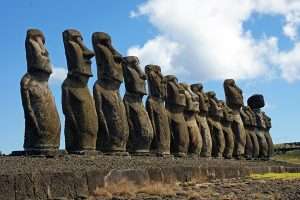
Inward or outward?
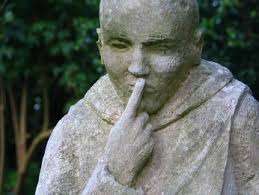
Finger width?
Continued: At night she went to her room. In the morning, no one knew where she was. Her father was very upset, and he went here and there looking for her. The viceroy realized that the king was very upset. He stood up and asked [that the king] give him a servant, a horse, and some money for expenses, and he went to search for her. He searched for her very much, for a very long time, until he found her. (Now he tells how he searched for her until he found her.)
And/or: Therefore, every Israelite is actively engaged in searching for the King’s Daughter so as to return her to her Father, just as she was in her girlhood. This is the mystery of the verse, “She shall return to her father’s house as in her girlhood, and then she can eat of her father’s bread” (Leviticus 22:13).
Footnote: "spent much time with her. Or “ frolicked with her.” This is God’s playing with the Torah before creation (Proverbs 8:30). According to the Midrash , God spent 2000 years before creation , frolicking an delighting with the Torah (Bereshith Rabbah). Kabbalistically, this represents the forces of creation going throgh the sefiroth of Chokhmah and Binah (Avodath HaKodesh). In Kabbalistic terms, this represents the light of the King entering the Vessels, which are represented by Malkhuth. As we have seen, Malkhuth , the Daughter, is the ability to grasp and hold."
Much later in the story.....
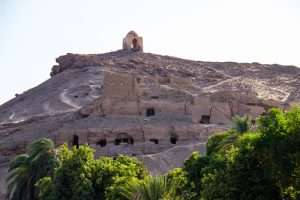
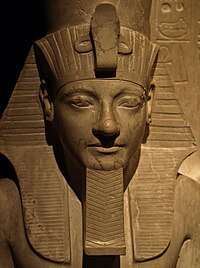
The right hand of Tutankhamun.
[The viceroy] traveled for many years searching, and finally he found another giant like the first ones. [This giant] was also carrying a huge tree. He asked similar questions, and [the viceroy] answered, [telling] the entire story. [This giant] also tried to discourage him, but [the viceroy] pressed his case on him also. [The giant] told him that he would assemble all the winds for his sake, and would ask them. He summoned them, and all the winds came. He asked them, but not one of them knew anything about the mountain or the castle. [The giant] said to him, “Don ’t you see that people have told you foolish tales?”
[The viceroy] began to weep very bitterly. “ I know for certain that it does exist!” he said. Just then he saw another wind come. * [The giant] was angry at it. “Why did you take so long to come?” [he demanded]. “I decreed for all the winds to come! Why didn’t you come with them?”
[The wind] replied, “ I was detained* because I had to carry a royal princess to a gold mountain and a pearl castle.” [The viceroy] was very happy....
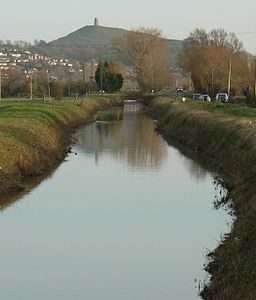
Isle of 'glass'.
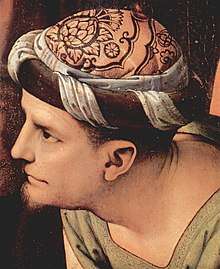
'Bald' innkeeper?
[The giant] asked the wind, “ What things are valuable there?” “ Everything is valuable there,” * replied [the wind]. The one in charge of the winds then said to the viceroy, “ You have been seeking [the princess] for such a long time, and you have expended so much effort. You may have difficulty because of [a lack of] money. I am therefore giving you a purse. Whenever you put your hand into it, you will find money there.” [The giant] then issued an order that this wind carry [the viceroy] there. The storm wind came and carried him to that place, bringing him right to the gate. There were soldiers there, who would not let him enter the city. But he put his hand into the purse and took some money. He was then able to bribe them and enter the city. The city was very beautiful. He went to a wealthy person and bought food from him. He would have to remain there a while, since he would have to use his intelligence and wisdom [to devise a plan] to free [the princess]. [The Rebbe] did not tell how he freed her. But in the end he did free her.

Sutton Hoo purse clasp: Wolfs / eagles and ducks.
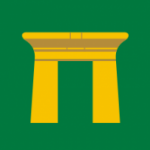
Something 'new'.
Foot note: "He would have to use his intelligence:" One needs clever plans to rescue the princess. This is paralleled by Jacob , who had to devise a clever plan to take Rachel (Malkhuth ) out of Laban ’s house (Biur HaLikutim 60:69). Similarly, Dinah (Leah ’s daughter after six sons) could only be taken out of Shechem with trickery (Biur HaLikutim 60:62). [The Rebbe] did not tell... Rabbi Nachman did not tell how he freed her, since this would involve revealing the mystery of the Messiah (Biur Ha Likutim 60:68; see Alim LeTerufah 2). For the same reason , Rabbi Nach man did not reveal the end of the story of the Seven Beggars. ['The Lost Princess' / Rebbe Rashman}.
Odysseus?
Refresher: Therefore, every Israelite is actively engaged in searching for the King’s Daughter so as to return her to her Father, just as she was in her girlhood. This is the mystery of the verse, “She shall return to her father’s house as in her girlhood, and then she can eat of her father’s bread” (Leviticus 22:13).
Ishon?
Meritaten?
Side note: Jericho is believed to be one of the oldest cities in the world. In the Bible, Jericho is best known as the location of an astonishing miracle God performed. Jericho was the first city conquered by Israel after crossing the Jordan River and occupying the Promised Land (Joshua 5:13—6:23).


Red head?
Jericho’s location was key to its significance. The city was situated in the lower Jordan Valley, just west of the Jordan River and about ten miles northwest of the Dead Sea. It sat in the broadest part of the Jordan plain more than 800 feet below sea level and nearly 3,500 feet below Jerusalem, which was only 17 miles away. This geographical detail explains why Jesus said in His parable that the good Samaritan “went down from Jerusalem to Jericho” (Luke 10:30).
In dramatic contrast to its desert surroundings, Jericho thrived as a fertile, spring-fed oasis. In the Old Testament, it was often called the “City of Palms” for its abundance of palm trees (Deuteronomy 34:3; Judges 1:16; 3:13; 2 Chronicles 28:15). Strategically located as a border city, ancient Jericho controlled important migration routes between the north and south, and the east and west. Eventually, the town became part of the allotment of the tribe of Benjamin (Joshua 18:12, 21).
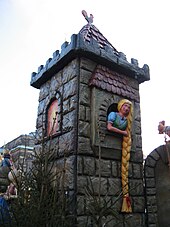
Dresden {Saxony} Germany. Rooster on top. Rooster also on top of Notra Dame roof. 'Forest of oaks'.
After the death of Moses, God selected Joshua, son of Nun, to lead the people of Israel. Under the Lord’s direction, they entered Canaan and began to take possession of the land. The first city standing in Israel’s way was Jericho, a secure fortress with high, formidable walls.  Joshua sent spies to investigate the city. Rahab the harlot, knowing that Israel’s God was going to overthrow Jericho, hid the spies and later helped them escape (Joshua 2).
Joshua sent spies to investigate the city. Rahab the harlot, knowing that Israel’s God was going to overthrow Jericho, hid the spies and later helped them escape (Joshua 2).
Before the battle of Jericho, God gave Joshua specific instructions for the men of war to march in silence around the city once each day for six days. The priests were to walk with them, blowing ram’s horns and carrying the ark of the covenant as a sign of God’s presence among them. On the seventh day, they were to march around the city seven times. At the appropriate signal, the priests were to blow their trumpets, and the people were to give a mighty shout. They did exactly as Joshua commanded, and on the seventh day the walls of Jericho crumbled. The soldiers went in and took the city, destroying it completely. Only Rahab and her family were spared.
Side step: The Heraion of Argos (Greek: Ἡραῖον Ἄργους) is an ancient temple in Argos, Greece. It was part of the greatest sanctuary in the Argolid, dedicated to Hera, whose epithet "Argive Hera" (Ἥρη Ἀργείη Here Argeie) appears in Homer's works. Hera herself claims to be the protector of Argos in Iliad IV, 50–52): "The three towns I love best are Argos, Sparta and Mycenae of the broad streets".
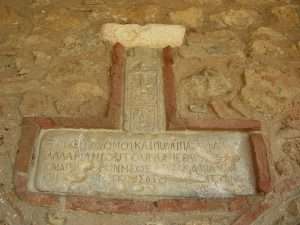
Wide or narrow awareness?

"Behind Will, stands desire."
The memory was preserved at Argos of an archaic, aniconic pillar representation of the Great Goddess.[1] The site, which might mark the introduction of the cult of Hera in mainland Greece, lies northeast of Argos between the archaeological sites of Mycenae and Midea,[2] two important Mycenaean cities. The traveller Pausanias, visiting the site in the 2nd century CE, referred to the area as Prosymna (Προσύμνη).
Continued: ''According to Watson, troy relates to a dialect word troi (balance). Then troy weight is a style of weighing, like auncel or bismar weights, or other kindred methods. The troy weight then refers to weighing of small precious or potent goods, such as bullion and medicines.
The pennyweight symbol is dwt. One pennyweight weighs 24 grains and 20 pennyweights make one troy ounce.[15] Because there were 12 troy ounces in the old troy pound, there would have been 240 pennyweights to the pound (mass) – just as there were 240 pennies in the original pound-sterling. However, prior to 1526, English pound sterling was based on the tower pound, which is 15⁄16 of a troy pound. The d in dwt stands for denarius, the ancient Roman coin that equates loosely to a penny. The symbol d for penny can be recognized in the form of British pre-decimal pennies, in which pounds, shillings, and pence were indicated using the symbols £, s, and d, respectively.''
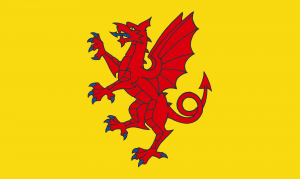
County of Somerset. 'Three' raised. One planted? One 'loop'?

'Flat' head? Back of?
Side step: "I asked Merlyn, how does one go about looking back into a 'past life'. How was it , that you were able to know with certainty about yours. What did you do?''....''Your question deserves a right answer'', he replied, ''Follow me... ''We walked to the very back of the cave where a large tapestry embroidered with the Red Dragon of Britain hung against the wall. To my surprise and delight Merlyn suddenly grasped the edge and gave it a tug - revealing a 'hidden' passage leading back into the rock. Down into this he disappeared, calling back through the 'darkness' for me to follow....It was as if I had been there before..." [Page 151 from the book by Douglas Monroe].
Similar {principle?} to such 'tales' as Fulcanelli and/or King Arthur legends,i.e.,wisdom to be found within them. Created with that aim in mind. Hence the understanding to such quotes {in reference to 'King Arthur} ''that he was conceived at Tintagel.'' ['History of the Kings of Britain' / Geoffrey of Monmouth]. Get it? Enlarged throughout.
S/W as a means....?
Side note: Look to the ''marshes'' {Somerset?} to locate any possible burial sites of any personage that may represent the Arthurian legends {Alfred?}.
''Wastelands''?
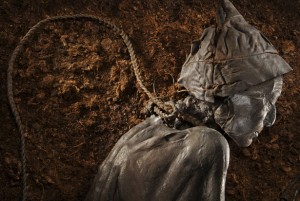
death/rebirth Mindset. Flat or pointy top? 'Triangular' therefore 'fire' link? Crown of fire? What would the next stage {'cycle'} REPRESENT and what with? Crown of Thorns?
Refresher: "The Agnisuryans respond to the sound. The waters ebb and flow. Let the 'magician' guard himself from drowning, at the point where land and water meet. The midway spot, which is neither dry nor wet {fen-land/BOGLAND?} - must provide the standing place whereon his feet are set. When water, land and air meet there is the place for 'magic' to be wrought {'fire'?}."

Blemmyes.
A working example: " The Catalogue of Ships {'glass' ones?} is said to be the oldest part of the Iliad, but it brings a mixed response from readers. For some it is a tedious list of warriors, their regiments and home towns and the number of ships in which they sailed to Troy, offering little to those keen to move on to the clamour of war in the following books." ['Homer's Secret Iliad'].
Follow the title of the book to 'see' it from a broader {horizon?} viewpoint - by way of the astronomical one. {The Royal way?}. Question. Which came first - The naming of the constellations or subject material?
Side note: "Royal blue is both a bright shade and a dark shade of azure blue. It is said to have been created by millers in Rode, Somerset, a consortium of which won a competition to make a dress for Queen Charlotte, consort of King George III." [Wiki].
"However, the deeper seeker will seek for the primary inner, rather than the secondary outer knowledge, that has to be found within." ['Rose Cross and the Goddess'].
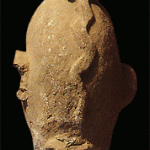
Snake/scorpion?

'internal' ?
Another example with the same intent..."Then the priest said,'This book is in the middle of the river at Coptos, in an iron box; in the iron box, is a bronze box; in the bronze box is a sycamore box; in the sycamore box is an ivory box and ebony box; in the ivory/ebony box is a silver box, in the silver box, a golden one and in that is a book. It is twisted all around with snakes and scorpions..."[Extract from the book by S. Ashby]. Some facts [nuggets] within the tale from the 'Lost Book of Djehuti'. Djehuti [Greek = Thoth] - the inventor of hieroglyphs. Coptos; within the u-turn of a river. All of which have to be deciphered to understand the parts within the whole. Question. Boredom?
Something extra: The mystery of 'creation' are found at three main centers: Heliopolis, Memphis and Thebes: The Osirian myth, which reigned on earth at the beginning of time, signs each site with one of its episodes: it is by the mouth of Tanis that the coffin of Osiris, murdered by his brother Seth, was washed into the sea. It is in Coptos that, through the celestial winds {southern ones?}, Isis learned of the death of her spouse, and it was in Byblos that she found the sarcophagus of Osiris, around which a unique 'tree' had grown. And it is in the marshes of the Delta that Wadjet, the female divinity of the North, secretly raised the 'young' child Horus who was later to engage his eternal cycle of combat with his brother Seth in order to reconquer his 'fathers' heritage.'' [Page 24/5 'The Temples of Karnak' / R. A. Schwaller de Lubicz].
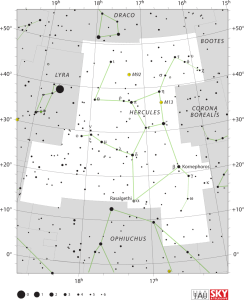
Ophiuchus lies between Aquila, Serpens, Scorpius, Sagittarius, and Hercules, northwest of the center of the Milky Way. The southern part lies between Scorpius to the west and Sagittarius to the east.[2] In the northern hemisphere, it is best visible in summer. It is opposite of Orion. Ophiuchus is depicted as a man grasping a serpent....Ophiuchus straddles the equator with the majority of its area lying in the southern hemisphere..... Ophiuchus (/ˌɒfiˈjuːkəs/) is a large constellation straddling the celestial equator. Its name comes from the Ancient Greek ὀφιοῦχος (ophioûkhos), meaning "serpent-bearer", and it is commonly represented as a man grasping a snake. The serpent is represented by the constellation Serpens. Ophiuchus was one of the 48 constellations listed by the 2nd-century astronomer Ptolemy, and it remains one of the 88 modern constellations. An old alternative name for the constellation was Serpentarius.[1]
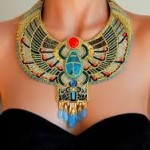 And/or: ''Just as the name Amun-Re links Amun with the sun god, so too, as Amun-Min-Bull-of-his-Mother, he is united with one of the oldest Egyptian gods, Min, who was worsipped together with Isis, at the important cult center of Coptos in Upper Egypt. From this town the ancient Egyptians used to make their way into the desert region along the Wadi Hammamat, to the quarries which provided rich sources of gold, diorite, schist and other valuable stones; and Min himself was honoured as Lord of these hill countries.'' [Page 82 'Hathor Rising' / A. Roberts].
And/or: ''Just as the name Amun-Re links Amun with the sun god, so too, as Amun-Min-Bull-of-his-Mother, he is united with one of the oldest Egyptian gods, Min, who was worsipped together with Isis, at the important cult center of Coptos in Upper Egypt. From this town the ancient Egyptians used to make their way into the desert region along the Wadi Hammamat, to the quarries which provided rich sources of gold, diorite, schist and other valuable stones; and Min himself was honoured as Lord of these hill countries.'' [Page 82 'Hathor Rising' / A. Roberts].
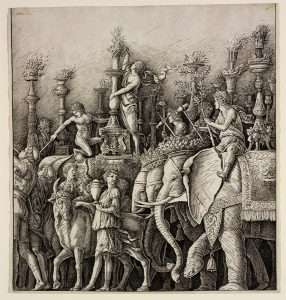
'light oxen': "I bring up an individual type as a point of departure to talk about. The one {'emotion'?} that is strongest will pull you first." [Page 4 'Stopping and Seeing' / Translated by T. Cleary].
And/or: "The golden flower symbolizes the quintessence of the paths of Buddhism and Taoism. Gold stands for light, the light of the mind itself, the flower represents the blossoming, or opening up, of the light of the mind. Thus the expression is emblematic of the basic awakening of the real self and its hidden potential....
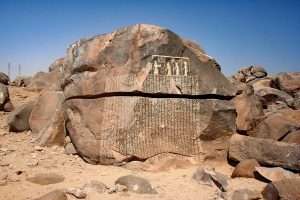
Primal opening?
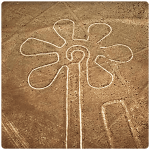
Pedestal?
The whole method of turning the light around uses the method of reversal. The beauties of the highest heavens and sublimest realms are all within the heart: this is where the perfectly open and aware spirit concentrates {mercurius?}. Confucians call it the open center {'forecourt'?}, Buddhists call it the pedestal of awareness {'horizon?}. Taoists call it the ancestral earth, the yellow court, the mysterious path, the primal opening....Lead symbolizes the true SENSE of real knowledge. Water stands for a symbol from the ancient I Ching representing the true sense of the knowledge of reality enclosed within conscious knowledge {'intuition / flank'?}. To say that it is just one flavour means that it is attained by the essence of consciousness itself, not by any modification of consciousness....
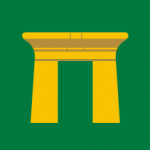
Gateway of Qena?
The golden flower is the same thing as the gold pill. The transmutations of spiritual illumination are all guided by mind." [Pages 1/10/75 'The Secret of the Golden Flower' / T. Cleary].
Continued: ''In predynastic times Min ruled a portion of Egypt that stretches 270 miles {'twentyseven'?} from Oxyrhynchus to Coptos...'' [Page 345 'Dreams of Isis'].

"The former constellation of Cerberus {'dog'} is held by Hercules before its stars were part of the constellation." Therefore Hades link? i.e., Sea's not fresh water.
Other keys that ''Min'' is identified with: 'Milk' sap of the 'lettuce' / 'Creates vegetation and lets the herds live' / 'Lord of snake of stones {'two'?} / 'Most 'male' of the gods' / 'Bull of the cows' / 'Bull of his Mother' / Annual Harvest Festival - link too 'emmer wheat' : 'seven' : 'soilders' : All in relation to: 'Ear of grain: which contains the seed for the following year: to be revitalised in the comming year'. [Pages 79-86].
Side note: Alchemy equivalent: Mineral/Vegetative/Animal as a means....?
''A period of someones youth is described as their salad days.''
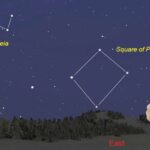 Side note: In geometry a quadrilateral is a four-sided polygon, having four edges (sides) and four corners (vertices). The word is derived from the Latin words quadri, a variant of four, and latus, meaning "side". It is also called a tetragon, derived from Greek "tetra" meaning "four" and "gon" meaning "corner" or "angle", in analogy to other polygons (e.g. pentagon). Since "gon" means "angle", it is analogously called a quadrangle, or 4-angle. A quadrilateral with vertices A , B , C and D is sometimes denoted as ◻ A B C D .[1]
Side note: In geometry a quadrilateral is a four-sided polygon, having four edges (sides) and four corners (vertices). The word is derived from the Latin words quadri, a variant of four, and latus, meaning "side". It is also called a tetragon, derived from Greek "tetra" meaning "four" and "gon" meaning "corner" or "angle", in analogy to other polygons (e.g. pentagon). Since "gon" means "angle", it is analogously called a quadrangle, or 4-angle. A quadrilateral with vertices A , B , C and D is sometimes denoted as ◻ A B C D .[1]
Quadrilaterals are either simple (not self-intersecting), or complex (self-intersecting, or crossed). Simple quadrilaterals are either convex or concave.
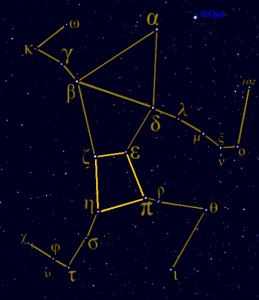
Hercules: lozenge? 'Squared the circle'?
From a different perspective: ''I went down on my knees and took out a package that was causing the blockage.....I took the package upstairs {i.e., taken from the 'well' in the cellar} - I had to take scissors to it because it was sewn up {'thread' link}. Inside the oilskin covering was a metal box. Inside the metal box were some sheets of paper - not really treasure of course. Not even a treasure map - just an alchemical manuscript.'' [Page 98 'Mercurius' / P. Harpur].
Question. ''Paper'' made from 'Wood'? therefore ''vegetative'' link?
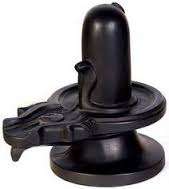
Limgam/Yoni .
A working example: ''When the sperm drop falls into the womb, it represents the First Substance. When the embryo has four strata, it represents the elements and the natures. When the members appear, the outward members like the head, the hands, the stomach, the private part, and the feet represent the seven climes. The INWARD members like the lungs, the brain, the kidney, the heart, the gallbladder, the liver, and the spleen represent the 'seven' heavens. The lungs are the first heaven and represent the sphere of the moon, the intermediary between the two worlds...many angels....the leader of which in charge of temperate water and air. The brain is the second heaven and represents the sphere Mercury...Main angel in charge of learning to write, aquiring knowledge, and managing livelihood is Gabriel. He is the second cause of the knowledge of the people of the world.
'Night of the Drop'?

Happy or Sad?
The kidneys are the third heaven = Venus = joy/happiness. 'Appetite' is the leader of these angels. The heart is the fourth heaven = the sun = Seraphiel. He is the secondary cause of the life of the people of the world. The spleen is the fifth heaven = Mars, in charge of severity, wrath, beating, and killing. He is the LENDER {leader?} of these angels. The liver is the sixth = Jupiter = Michael = ''the cause of the provision of the inhabitants {people}. The gallbladder = seven{th} heaven = Saturn = ''in charge of taking spirits {at death} = Azrael. The animal spirit is the FOOTSTOOL and represnts the sphere of the fixed stars, since the sphere of the LURED stars is the footstool of the macrocosm. The psychic spirit is the Throne and represents the sphere of spheres. The intellect is the vicegerent of god. As long as the bodily members do not grow and develop, they represent minerals. When they grow and develop, they represent plants. When sensation and volitional movement appear, they represent animals. Ten qualitative levels. Different things in the universe give news of god in diverse ways and various degrees. God is light, and there is no light but light.'' [Pages 90-92 {Kindle}: 'Tao of Islam' / Murata Sachiko].
UNmanifested/Manifested to enlarge.
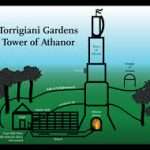 ''In Newtons view, every part of the universe was intelligent.....According to the ancient way of thinking that Newton subscribed to, it is not the case that animal, vegetable and mineral are totally distinct categories. They naturally overlap, intermingle, and in special circumstances may morph one into the other...'' [ Page 444 ' The Secret History of the World' / J. Black].
''In Newtons view, every part of the universe was intelligent.....According to the ancient way of thinking that Newton subscribed to, it is not the case that animal, vegetable and mineral are totally distinct categories. They naturally overlap, intermingle, and in special circumstances may morph one into the other...'' [ Page 444 ' The Secret History of the World' / J. Black].
Think about it in relation to that eternal ''bit''.
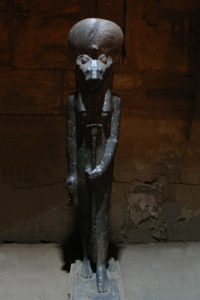
A neter? Best foot forward?
And/or: ''The gods of Egypt are representations of nature. The ancient Egyptian word 'neteru' morphed into the word 'nature' in the English language.'' [Page 7 'Sekhmet: Transformation in the Belly of the Goddess' / N. Scully].
Continued: Question 2. Why a sycamore?
''Snakes/Scorpions'' in relation to 'poison'. That in relation to ''Redeemed/unredeemed'' etc. ALL in relation to a mindset.
Side note: The narrow valley and headwaters of the Eurotas valley {Lacedaemon}, the domain of King Menelaus of Sparta, became the spindly constellation of of Scorpius." ['Homer's Secret Iliad'].
The Vale of Arryn? {Game of Thrones}.
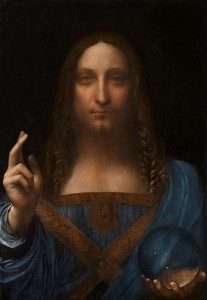 As is..."According to Thoth, there are nine crystal balls beneath the Sphinx, one inside the other. Archaeologists and psychics have been searching for these balls for a long time - it's an ancient legend. It is said that these crystal balls are somehow connected to the consciousness of the earth and to the three levels of consciousness that humans are now experiencing. Various seekers have searched for the nine spheres, spending a great deal of time and money, but according to Thoth, you don't need the crystal balls; you just need to draw nine concentric circles, because its just as revealing. If they'd known it was geometry and consciousness they were seeking and not necessarily an object, the knowledge would have come easier." ['The Ancient Secret of the Flower of Life' / D. Melchizedek - Vol 2].
As is..."According to Thoth, there are nine crystal balls beneath the Sphinx, one inside the other. Archaeologists and psychics have been searching for these balls for a long time - it's an ancient legend. It is said that these crystal balls are somehow connected to the consciousness of the earth and to the three levels of consciousness that humans are now experiencing. Various seekers have searched for the nine spheres, spending a great deal of time and money, but according to Thoth, you don't need the crystal balls; you just need to draw nine concentric circles, because its just as revealing. If they'd known it was geometry and consciousness they were seeking and not necessarily an object, the knowledge would have come easier." ['The Ancient Secret of the Flower of Life' / D. Melchizedek - Vol 2].
3X3. ''The empowered three''?
And/or ''Mineral/Vegetative/animal'' ?
From a different perspective: "....In the most ancient Pyramid Texts - the priests of Heliopolis praised three different groups of gods - those who ruled the 'upper' world, those whose ruled the 'earth' plane, and those who ruled the 'underworld'.....'' [Page 123 'The Union of Isis and Thoth' / N. Ellis and N. Scully].
N.B. Throughout the book the word 'crystal' used to tie it all in.
Continued: ''...beneath the Sphinx'' = limestone. Limestone in relation to 'seabed'. Question. What lies beneath {within} a seabed?
Albion?
Crystallization in relation to UNcrystallization - as a means...? [Enlarged elsewhere].
Side note: In the tomb of Tut a 'dagger' made of 'iron' from the stars. The pommel of which - ''made from rock crystal''. Found on his abdomen. ['Tut's Treasures: Hidden Secrets' / Nat Geo].
'Glass' ?
Left leg weakened - like one of the main characters in the Iliad 'story'. Something beginning? Feet/hands as a means....?
Try ''belly'' to take it further.
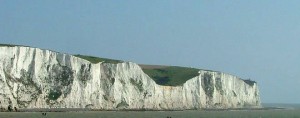 "A monk who had meditated long in search of Illumination {enlightenment?} finally received a great flash of insight. Rushing to his 'roshi' {Zen master}, the monk cried out, 'I have it! I have it! That rock there is inside my head.' "You must have a big head," the master replied, ''to hold a rock that size." Anything?
"A monk who had meditated long in search of Illumination {enlightenment?} finally received a great flash of insight. Rushing to his 'roshi' {Zen master}, the monk cried out, 'I have it! I have it! That rock there is inside my head.' "You must have a big head," the master replied, ''to hold a rock that size." Anything?
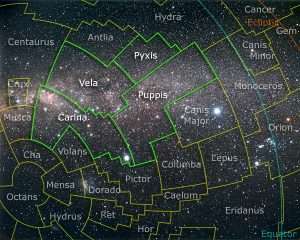
Argo Navis, scanned from AF2-01
Another 'fact' to ponder. The relationship between copper, silver, and gold as represented within the 'golden raft of El Dorado. Or why Electrum was used by the ancients, especially in the Old Kingdom of Egypt. As a representation of something. As indicated by such authors as S. Murata. Chapter two. ’Tao of Islam’.
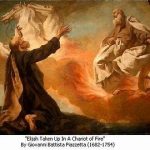 Meditation and yoga another form of helping positive overcoming negative. Hence the reason for its application in most ‘Mystery clubs’. We all understand the merits of a healthy ‘attitude’. Especially in relation to understanding something new. In understanding the value of positive over negative. This subject is no different. Understanding those negative aspects in relation to the positive ones. The understanding of the ‘self’ in relation to the bigger/overall picture. For each and every individual. Regardless of culture / religion or class.
Meditation and yoga another form of helping positive overcoming negative. Hence the reason for its application in most ‘Mystery clubs’. We all understand the merits of a healthy ‘attitude’. Especially in relation to understanding something new. In understanding the value of positive over negative. This subject is no different. Understanding those negative aspects in relation to the positive ones. The understanding of the ‘self’ in relation to the bigger/overall picture. For each and every individual. Regardless of culture / religion or class.
Side note: ''So lets go Aurora hunting with our positive hats on.'' [Michaela Strachan / 'Under The Xmas Sky' / BBC2 / 2018].
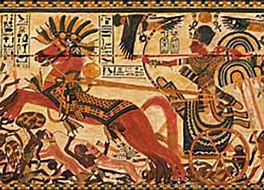
Waging 'war' on his lower self? 'Seven' head plume? 'Bird' smack bank in middle of the menagerie. Something beginning? Represented within that line of sight. 'nose'? Recall the 'nose' of the Dog Star.
"How does it feel when you are positive? There is one word for it: powerful. Why do you feel powerful? Because the thought process has reversed the direction of you mind energy which is now expanding, linking up to the cosmic forces. The more positive you are the more energy you are absorbing." [Extract from, chapter 11, 'Mind Magic' by B. Shine].
Understanding this subjects 'framework' from the oral tradition up to the present date, gives a deeper meaning to the above quote. A plausible one.

Have no fear - its THE REAL McCOY !! Joe McCoy {from Abilene?}.
"Its fun to be good, its boring to be bad." Quote by one of the 'Royals' {the big ginger one} while in Africa.
Hindu equivalent...."In the last resort, nothing but the vision of the 'Atman' itself can cause the utter dying out of desire, and therefore the disciple is instructed not to remain content with negative restraint but to center his gaze upon the Atman within, unseen, though yet it be....
...."Silence thy thoughts and fix thy whole attention on thy 'master,' [Hebrew equivalent, 'Yahweh' by way of '' Adonai.'']...whom yet thy dost not see, but whom thy feelest."
''The whole gamut of human experience {and/or emotions}''. Question. What animal represents that final word? ...Why?
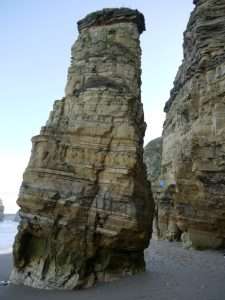
"The 'Lot's wife' sea-stack, Marsden Bay, South Shields, North East England, United Kingdom located on the North Sea coast."
...The slightest wavering, the slightest turning back in thought to that sense world on which the disciple has turned his back, will energize anew the desires which he is striving to abandon, and as the tension increases in his desire nature {what some psychologists term the unconsciousness} they will burst out in a great flash of anger utterly devastating to his spiritual progress, shattering his inner perception and causing a loss of those ''memories'' by which he hoped to mount...
Side note: ''memory'' in relation to 'belly'. Try Gobekli-tepe.
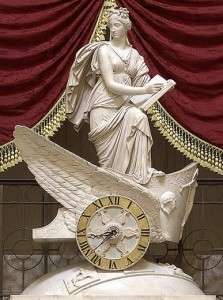
'Car {chariot} of History' by Carlo Franzoni {1819} - Statuary Hall {u.s.a}. The Muse of History. Capricorn {top-down?} - Aquarius {bottom-up?} and Sagittarius {?}. Question. 'Twenty-three' minutes to 'nine'. Recall what both numbers represent - therefore Sagittarius = 'time' related? Synchronistic link?
...It is not that the sense life is to be negated or outwardly discontinued, as impractically taught by some Sankhyas. It is an inner withdrawal that is to be practiced, a withdrawal to 'higher levels' that will in itself bring that outer harmonization which is essential if the buddhi is to be attained. In the old symbol of the chariot, the horses of the senses are to be held back [ nigrihita] by the reins of the mind, but it is not intended that they be unyoked from the chariot or that their movement should be stopped altogether...
'Chariots of The Gods' by E. Von Daniken. Its an inner awareness not external, i.e.,no alien spacecraft. Question. Nothing more therefore than a 'meditation' exercise? After a stressful day? Since the dawn of human {mental?} activity?
...The aim of this practice is that the mind should, to some extent at least, be purified by the practice of selfless action, and at least partially liberated from the 'thraldom' of attachments, so that it may cease to assert its unique viewpoint at every moment. Then as the wind of desire subsides, the disciple will feel a luminous peace and wisdom reflected in his heart, like the images of those eternal stars reflected in the depths of a lake, and he/she will have gained a preliminary perception of the actual nature of ''buddhi'' that will be a thousand times more useful to him/her than all the descriptions of the books." [Chapter two, 'The Yoga of the Bhagavat Gita' by Sri Krishna Prem].
''The Pool of the Eternal Life'' - a quote made in the fictional movie 'The Mummy: Tomb of the Dragon Emperor''. Found in the Himalaya's - AN Auroch {cow} leading the way.
Question. Have some of those 'archetypes' through the course of generations {evolution?} become generalized? OR nothing more than imaginings {fantasy aspect?}.
Analogy? of same..." he assures us, that even a little meditation [and/or study. This readers input] it saves us from the dire fear of death and/or after death states. Do not fix your spiritual ideal on small mountains, but hitch it to the star of unqualified divine attainment. If you work hard you will get there." [Extract from the book 'Autobiography of a Yogi'].
Antoine Faivre puts the role of the scholar thus:...those of us who study it [i.e., esotericism] are not only called upon to be scholars, but detectives who are able to follow its often elusive traces.
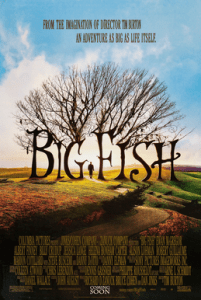
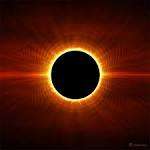
Wedding ring?
Something hinted at: "Both difficulties are present in the notion of time: it is an accident of motion, which is itself an accident of a moving object, besides it is not a fixed property; on the contrary, its true and essential condition is, not to remain in the same state for two consecutive moments. This is the source of ignorance about the nature of time. We consider time a thing created; it comes into existence in the same manner as other 'accidents', and the substances which form the substratum for the accidents..." [Page 171 'Guide for the Perplexed' / M. Maimonides]. Try ''accident''.
A working example: "A hitch in the army was up to 'three' years at that point. And having waited 3 years just to meet Sandra, i knew i couldn't survive being away from her for that long. So i took every hazardous assignment i could find with the hope of getting my time down to less than one year."
Refresher..."Got to see it, rather than just read it..." John Humphreys talking to D. Tennant and Greg Doran in relation to the plays by W. Shakespeare. [400th anniversary. Radio 4. 23/04/16].
Practical example: ''Say what u see'' {'Catchphrase' / ITV].
Apply the above to get 'ones head' around such quotes {concepts?} as: Buddhi...."An impersonal spiritual faculty 'giving' knowledge of the Cosmic Unity. Also used of the knowledge itself. It is also the seat of such 'higher' emotions as love. In a 'lower' sense, it is used for the purely intellectual aspect of our empirical personalities."
Together with..." The buddhi is the wisdom which 'sees' the One in All; it is also the faculty by which that vision is acquired." [Chapter 10, same book].
Atman...."Originally meaning breath, the word came to stand for 'self,' or anything that may be considered self, from the body, up to the 'highest' reality. Particularly it signifies the higher self [ jivatman], the manifested Cosmic 'self' [Mahat Atman] and the unmanifested transcendent self [Shanta Atman]. It is the consciousness, particularly on the 'higher' levels." [Pages 217/218 of the same book].
Even though written from a Hindu perspective, those general keys [highlighted, i.e., the Micro within the Macro] still define that paragraph.
REFRESHER: "....the words 'idea', 'wisdom' and 'vision' ALL originate from the common Indo-European root which means ''to see''. An idea is an insight, an inner flash of illumination that can result in 'wisdom'." [From the book 'Alexandria' / Vol 3 ].
Different perspective [i.e.,'angle'], same intent..."But, beyond the physical and beyond the psychic is the spiritual world, the world of spirit: 'spiritus' in Latin, 'pneuma' in Greek and 'atman' in Sanskrit. That 'Spirit' though separate from matter and soul is yet interwoven in the whole structure." [Chapter 'one,' to the book 'The Cosmic Revelation' by Bede Griffiths].
Analogy: "Everything has spirit within it - is animate - the word animate means filled with spirit, soul - for anima means soul." ['Elen of the Ways'].
Egyptian ['perspective'] equivalent... In 'profile' in relation to 'face on'. Try Part 3.
Think about it all in relation to that ''UNIVERSAL BIT''.
All a link to 'objectivity' [purpose of] in relation to an understanding, [of say, a subject] relative to the self. The Micro within the Macro. Other definitions [enlarged] elsewhere. Use the 'find' tool [''search box'']. Try 'Atman'. That final link to the ''teacher'' of the 'Dead Sea Scroll' fame. Or Guardian of the Gate.
'On Having No Head: Zen and the Rediscovery of the Obvious' / D. E. Harding.
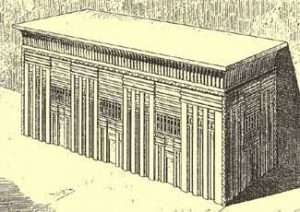
Menkaure sarcophagus {lost at sea}. Recesses = 'shadows'? as a means....
Those negative ‘aspects’ represented with other key words that indicates an ‘offset to the norm’. More generally known as ‘the fall’ and its relevant importance to the wider ‘picture’. [ In their opinion ]. That fall represented...as in the stone age...with the ‘Heel ’ stone. Offset purposely as indicated in such books as...’In Search of Ancient Astronomies’. By E. Krupp.
The author of 'The Cities of Dreams' believes that 'heel' symbolism proves [amongst others] his hypothesis of the ''ousting of red-haired Neanderthal by Cro-Magnon.'' Using the story in Genesis 25 of the birth of the 'twins' Jacob and Esau - especially the statement - ''elder shall serve the younger.'' [ Chapter 15]. Understanding this subject gives it true meaning. 'Higher over lower' etc. All explained within and throughout.
Robert/Renly Baratheon? {Game of Thrones}.
Side note: Question. Cro-Magnon man in relation to Neanderthal man - which understood 'objectivity' {and all its benefits} - first? Or does it matter?
'On Having No Head: Zen and the Rediscovery of the Obvious' / D. E. Harding.
A {practical?} example: "Bring yourself into the company of people who you feel display a good balance of both sides. Being with other overtly masculine types will only compound your problem. Usually you will find that older people have accomplished this better than younger people. They have had more time to transcend the social stereotypes {archetypes?} and discover their own balance." ['Secrets of Shamanism: Tapping the Spirit Power Within You' / J. and L. Stevens].
Spirit in relation to Soul?
Or more to the mark/point. The ‘offset’ pyramid on the giza plateau followed by the other two. The final one being that most famous one. The largest of the three. That order in which they are meant to be understood.
That final monument taken with the others; represented by those three bright stars within Orions belt. The 'offset' one being ' the least amount of light'. ['Black Genesis'. Mentioned within] . Together with the three stars of the Cygnus constellation, as indicated in the book 'The Cygnus Mystery' . [Especially plate 19 ].
The Northern Cross. 'North' in relation to 'South'. Symbolic of. One indicative of 'top down' the other 'bottom up'. The implication being from a 'fall' to getting back on the right tack. From darkness to light. From unknown to now known. By way of the 'middle' ground. Maintaining that inner equilibrium . Positive over negative. Which if understood correctly, indicates a direction of 'order', i.e.,does that indicate an order of construction?
Verified; of sorts; by the work of Boris Mouravieff. 'Gnosis', of whom it is said another individual with an esoteric interest , learned much from ; namely Gurdjieff. Within that first chapter of the first volume, can be seen in diagram form that same offset pattern but now in the vertical representation, [explained elsewhere] its true form; together with his 'law of three' . Explained throughout. Only read volumes two and three when ready. Go with your gut feeling. What this subject defines as that ''intuitive one.''Learn to listen to 'IT' instead of those first impressions. That is if you want to understand this first yet final remaining subject.
Anthony Duncan another author, who inspires the reader to look deeper within the subject as a whole, by way of the Christian theme. Found within. Together with 'Jesus Christ Sun of God: Ancient Cosmology and Early Christian Symbolism].
The Hebrews represented the same with the 'serpent' tale [explained throughout], negative overcoming / influencing positive; or more to the point that 'unknown' state if not corrected, [i.e.,brought back to balance] could lead to a fall....or more importantly to remain in a ''fallen state.'' i.e., lucifer = fallen angel [Angel, link to 'shining ones', i.e.,higher relative to 'lower'] that most associate incorrectly or otherwise to a 'serpent', becomes the main anchor point of that biblical story. From a negative back into a positive. From darkness to light. Represented in all cultures as a U-TURN. Explained throughout. Turning those ''wilderness' years into a positive, in order to get to the ''promise land.''
That journey itself when plotted out, representing an about turn; a reversal of fortune; a u- turn. Mount Sinai, the middle of that journey ['lowest' mysteries; 'highest' level of. Hebrew equivalent]. Symbolic of an understanding. The Egyptians used the Nile river to represent the same principles. Hence the reason and chose of position for the valley of the 'kings'. That further 'development' represented by the 'tomb' of the 'golden child'. In the middle of that chosen spot. Think on it, relative to...


Moving 'mountains'?
"The function of Khidr as a ''person archetype'' for both Suhrawardi and Ibn Arabi is to reveal each disciple to himself...He leads each disciple to his own theophany {'Virgil'?}...because that theophany corresponds to his own 'inner heaven', to the form of his own being, to his eternal individuality...Khidr's mission consists in enabling you to attain to the 'Khidr of your being', for it is in this inner depth, in this 'prophet of your being', that springs the Water of Life at the foot of the mystic Sinai, pole of the microcosm, center of the world...And this is perhaps the secret reason for which the doctrine of Ibn Arabi was so feared by the adepts of the literal religion, of the historical faith; of the dogma imposed uniformly upon all. He who is a disciple of Khidr possesses sufficient inner strength to seek freely the teaching of all masters... " [From the book 'The World Turned Inside Out'. Mentioned elsewhere].
"A river of thoughts''. [Quote / 'pun' taken from the book by Tomberg].
A working example {i.e., in 'story' form}: ''To the west, the village was fringed by the river which looped behind the Abbey, while far away to the east, beyond the labyrinth of narrow lanes, he could just discern the grey ribbon of a motorway.'' [Page 8 'The Serpents Circle' / P. Harpur].
'The Mystic Spiral: The Journey of the Soul' / Jill Purce.
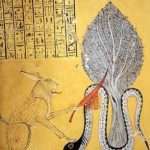
Any loops?
"Water is seen as a symbol of the maternal, the 'Great Mother', as well as the great unfathomable and mysterious well of Wisdom contained within the subconscious mind. In short, Water symbolizes the infinite realm of possibilities......Like the element of 'Fire', Water also symbolizes the ideas of transfiguration and regeneration. The direction or cardinal point assigned to Water is West. [Extract taken from the book by Cicero]. For a 'deeper' point of view try ''incarnation'' in the usual box. If only to understand it from 're-incarnation'.
The author of 'Lazarus Come Forth' defines those two same 'concepts' with the labels ''degeneration'' and '' regeneration'', [chapter 3] . There 'physical' representation [regardless of time place or culture] has always been the same throughout the course of multiple generations over thousands of years. The ebb and flow of 'tides'.
And/or: ''Degeneration'' {forgetting?} / ''Regeneration'' {remembering?}.
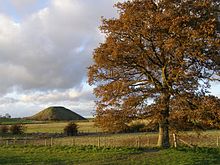
Silbury hill seen from swallowhead springs. Coincidence?
"Around the time of her feast [Bridget of Ireland] , at the beginning of February, an observer standing on the hills summit looking West, would see a swan in flight formed by the inundation of pastures in the vicinity of a U-shaped bend on the river Avon, known as the 'Swans neck'.
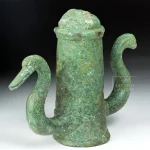
A Roman swan figurine used as a chariot rein guide for two horses.
As with the return of sacred waters in spring at Kennet hills, called swallow head spring, such naturalist phenomena would have been important to the geomythic beliefs of our ancestors. [Page 98, 'The Cygnus Mystery']. Recall what 'Swans' represent or are symbolic of, if only within this subject. Swallow in relation to same. Try ''spring'' and/or ''fountain'' and/or ''u-turn'' etc.
Aquae Sulis?
And/or: A traditional punt has no tiller nor any provision for oars, sails, or motor; instead it is propelled and directed with a pole. Poles for pleasure punts are normally made of spruce wood or aluminium alloy tube. A normal pole is about 12–16 feet (3.7–4.9 metres) long and weighs about 10 lb (5 kg). In both Oxford and Cambridge, long 16 ft (4.9 m) poles tend to be used exclusively. The bottom of the pole is fitted with a metal "shoe", a rounded lump of metal to protect the end – the shoe is sometimes made in the shape of a swallow tail.
'Sixteen'?

'light oxen': "I bring up an individual type as a point of departure to talk about. The one {'emotion'?} that is strongest will pull you first." [Page 4 'Stopping and Seeing' / Translated by T. Cleary].
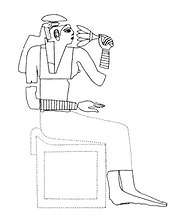
Wife / Mother / Grandmother of the Old Kingdom pharaohs. And/or: ‘The word for the sense of smell is khnem. Smell is seti, the same word as that for the seed which creates form out of receptive matter. The function of smelling, khnem, has the same name as Khnum, the potter Neter who gives form to fecundated matter." 'Scatter' to enlarge.
Their history is the history of the world since the creation of the primordial Types, as it is written, ts ferryman in the primordial world, take us speedily to the land where the Neters were created at the beginning of the cycles.” The dead sah is submitted to cyclical alternations as Sah-Orion to the seasons of Osiris . . . that is why it is said, “he was conceived with Sah-Orion in the west and brought forth with him in the east”. The alternations of the Osirian state are successive transitions from darkness into light, sojourns in the dark west, rebirth into day. But rebirth needs a point of recall which our Masters liken to the action of the Imperishables Meskhetiw and Menit, constellations that are identified with three principles. First, the principle of perpetuity which links effects with fresh causes and leads memoryconsciousnesses to a rebirth determined by affinities with the sdh’s Ka. Second, the principle of stability, shewn in another symbol, the thigh of Osiris, the resurrection of which and re-erection of the pillar the water of revitalisation will ensure. Third, the principle of stability signified by the mooring-post, which draws Kas back to the affinity of their earthly djed or their spiritual djet. Menet is the port into which the boat returns to be moored. It is the swallow, the migrant that leaves its nest to return next year. Study once more the symbol of the djed, the pillar of Osiris, which alludes sometimes to the ending of these alternations by the inscription of two eyes surmounted by one single nefer instead of the third eye.’
REFRESHER: A traditional punt has no tiller nor any provision for oars, sails, or motor; instead it is propelled and directed with a pole. Poles for pleasure punts are normally made of spruce wood or aluminium alloy tube. A normal pole is about 12–16 feet (3.7–4.9 metres) long and weighs about 10 lb (5 kg). In both Oxford and Cambridge, long 16 ft (4.9 m) poles tend to be used exclusively. The bottom of the pole is fitted with a metal "shoe", a rounded lump of metal to protect the end – the shoe is sometimes made in the shape of a swallow tail.
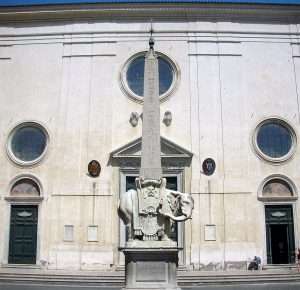
Round the corner from....? AND/OR: You can follow two paths in the mountains, Her-Bak,’ said the Sage. ‘The first winds round it with many a twist {'spiral'?}, exploring; the slope is _ gentle, the ascent easy, varied, amusing. This path avoids points of danger. It never attacks the Peak and halts at shelters known to be safe. The other is steep, takes each phase of the climb without detour, skirts precipices and reaches a summit that is only accessible to a man who can face naked sunlight and danger. Which path will you choose, Her-Bak?” 'The quick and straight one,' Her-Bak replied. ‘Be watchful then. What is practicable on the roads of Earth is more difficult in the way of Maat. An error of direction is soon noticed when you are crossing the desert, but not always in the search after truth if you let go the guiding thread.’ {same}.

Moving 'mountains'? Bobbin?
AND/OR: ‘It is profitable to note, first, that measures of length are based on the arms and hands, with the finger as unit. Esoterically man is seen as a five-pointed star. The highest point is the trunk and head; the lateral points are the arms; the two lower are the legs that touch earth. Arms and hands serve as measures: the forearm, 4 which with the hand gives the cubit, is also the symbol of individuality. The hands do, give or receive; but the right hand is active, the left passive: if we befigure someone with two right or two left hands it is to specify an active or a passive character. The back, supported by the vertebral column, is called iat, like anything with an axis and two poles. The north pole, the head, cranium and all, is called tep, the south pole, heel and sole of the foot, tb.t. The twelve ribs, which develop the chest like a sphere with two spirals, are called spr. Note that this framework which swells and collapses on inspiration and expiration has the same name as the function spr, which means to aspire, strain towards, implore. The root men, which has in it the idea of base, foundation, stability, gives their names to the thigh, men.t, base and stability of the trunk, and to the breasts, nutritive base of a child’s life. If you would understand the process of formation, nutrition and transformation in our flesh, study the visceral organs of generation and nutrition in the belly, khat, bearing in mind that khet means wood, a thing or a fire. Khat is also the word for a corpse. {'Her-Bak: Egyptian Initiate' / Isha Schwaller de Lubicz}.
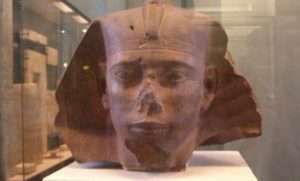
He is the king who introduced the royal title Sa-Rê (meaning “Son of Ra”) and the first to connect his cartouche name with the sun god Ra.
CONTINUED: "The Egyptian name Isis means ''throne'' a reference to the function of the Neter as the ''seat''...The animal of Isis is the swallow." [Page 166 from the book by R. Clark].
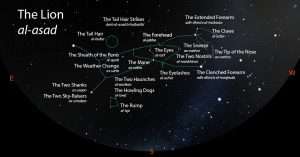
The nose of the 'Lion' {'sneeze'}. AND/OR: O Proserpina,
For the flowers now, that frighted thou let’st fall
From Dis’s waggon! daffodils,
That come before the swallow dares, and take
The winds of March with beauty.
– William Shakespeare
The Winter’s Tale, Act 4, Scene 3.
'Governor'.
A working example: ''Above on the left, above the Aker lion facing in the opposite direction, a sun boat is being raised upwards, with a swallow - the herald of dawn, on its prow.'' [Page 69 'Hathor's Alchemy'].
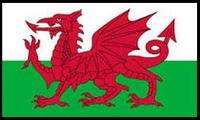
''The tongue of the Welsh dragon is the symbol of the Welsh Language Society.''
Denderah to enlarge.
It also within an 180 bend of a river.
Side note: ''The expression “One swallow does not a summer make, nor one fine day; similarly one day or brief time of happiness does not make a person entirely happy” is attributed to Aristotle (384 – 322 BC)..... One swallow does not make a summer, because individual birds may overshoot, arrive too early, have been blown north by accident, and they tend to retreat swiftly if conditions are harsh. The presence of two swallows might well be a sign of preliminary nesting behaviour.''
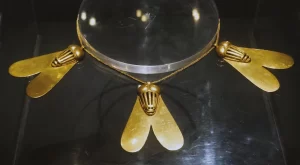
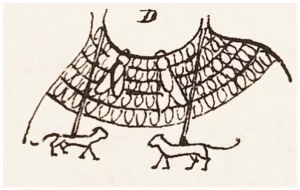
Web of manifestation. 'Shoulder/neck' length?
Something hinted at in story form {method?}:"Lubrin Dhu, under the high table {'upper room'?}, saw the firelight leaping on the plucked harp strings; but he was watching the pattern that the words and music had begun to weave inside his head; deep strong flowing patterns that had in them the beat of hooves and the streaming of manes {'ribbons'?}, and above and around the horse patterns, the grace notes rising like spun clouds, like flocks of little birds wheeling and skimming above the herd. And as he watched, the longing that he had to capture the swallows flight came back on him again. Scarcely knowing that he had done so, he edged forward, out from under the table, over the bracken strewn floor towards the bare flagstones that edged the hearth. A piece of charred stick had fallen from the fire, and he picked it up and began to draw on the hearthstone the thing that he was seeing inside his head....The pattern was coming. Anyone else might have seen on the flagstone only a tangle of wavy lines and random spots and dashes, but to Lubrin, coming closer to the secret of the thing this time than he had done with the swallows, it meant what he wanted it to mean, and it was beautiful; also, in a strange sort of way, it was part of himself." [Page 23/4 'Sun Horse, Moon Horse' / Rosemary Sutcliff].
"Sutcliff was born 14 December 1920 to George Ernest Sutcliff and his wife Nessie Elizabeth, née Lawton, in East Clandon, Surrey.[4] She spent her childhood in Malta and various naval bases where her father, a Royal Navy officer, was stationed. She was affected by Still's disease when she was very young, and used a wheelchair most of her life. Due to her chronic illness, Sutcliff spent most of her time with her mother from whom she learned many of the Celtic and Saxon legends that she would later expand into works of historical fiction."
Recall J. R. R. Tolkien's epics written by an Oxford Don.
Myth or mindset?

Isle of Wight flag. Lozenge? Toponymy: "Place of division." and/or "The island that lifts up out of the sea." What about "multiplication?" Delos? AND/OR: A wooden platform found on the sea bed {"lobster" found it} - in the mesolithic era. Purposely built for permanence. Built on boggy marshland. Interlocking planks."We dont know why." {'Digging For Britain' / S8 EP3}. 'Pavilion' to enlarge.
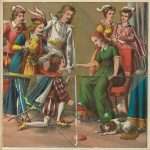
Hearthstone: "A flat stone forming a hearth or part of a hearth."
"It takes little imagination to people the old grey kitchen with the monastic cook and his scullions, for the great flagstones of the floor bear the marks of their feet. There is something strangely impressive in footworn stone. Nothing so humanizes an ancient building as the shallow troughs in its flagstones worn by human feet." [Pages 47/8 'Glastonbury: Avalon ofb the Heart' / D. Fortune].
The Wain.
Side note: Work on this fascinating prehistoric site began back in the 1980s, when it was identified as a preserved prehistoric forest with associated peat deposits.
Sedimentary ancient DNA from the sites has revealed a habitat of oak forest and herbaceous plants, inlcuding Einkorn: this last find provides evidence that wheat arrived in Great Britain over two millennia earlier than previously recored.

 Bouldnor Cliff is the only archaeological site in a submerged Mesolithic landscape currently known in the UK. The waterlogged anaerobic conditions have created an excellent environment for preservation for organic material. Consequently, the site has the highest potential for the best-preserved discoveries of Mesolithic artefacts and palaeo-environmental evidence in the UK, as has been demonstrated with the unique DNA, boat building and string finds mentioned above.
Bouldnor Cliff is the only archaeological site in a submerged Mesolithic landscape currently known in the UK. The waterlogged anaerobic conditions have created an excellent environment for preservation for organic material. Consequently, the site has the highest potential for the best-preserved discoveries of Mesolithic artefacts and palaeo-environmental evidence in the UK, as has been demonstrated with the unique DNA, boat building and string finds mentioned above.
Internationally, the findings suggest a sophisticated Mesolithic site with social networks linked the Neolithic front in southern Europe or the north European plain. These were some of the last people to cross from the continental landmass to Great Britain before the formation of the North Sea. Interpretation of the results would help us understand the potential and character of international connections and help us locate comparable sites within the submerged palaeo-landscapes that are being discovered across the British and European Continental shelf. Unfortunately, the evidence has been located because the seabed is eroding. Monitoring over a ten-year period has recorded lateral erosion of up to 4m in the most vulnerable parts of the archaeological sites.
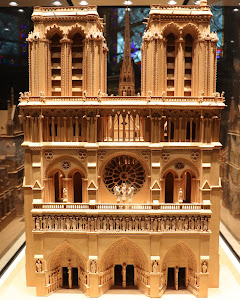
Notra Dame. A forest of oaks below a lead roof. 'Attic' to enlarge.
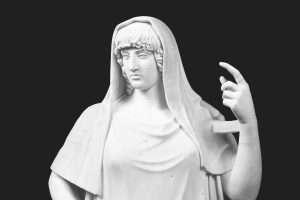
Guardian of the hearth. N/W?
However, it wasn’t until 1998 when the Hampshire and Wight Trust for Maritime Archaeology (now the Maritime Archaeology Trust) began investigating the site as part of the European ‘LIFE’ Project that research began again. During a routine survey dive volunteers spotted interesting worked flints in a lobster burrow. Excitement grew as more worked flints were found over the duration of the fieldwork season in 1998 and 1999. During the 1999 season a full profile of the cliff showing the multiple layers of peat and alluvial silts was compiled.
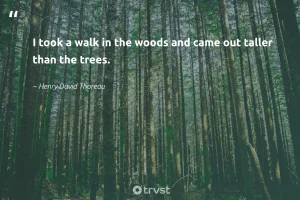 Since then work has been ongoing throughout numerous fieldwork seasons, during which more fascinating discoveries have included worked and burnt flints, hearths, wooden ‘platform’ structures and a worked wooden artefact that could be part of a log boat or trough. Excavation and rescue recovery have been completmented with palaeoenvironmental analysis and radio carbon dating. This data has provided additional context for the site and erosion studies, which have demonstrated how fast it is disappearing.
Since then work has been ongoing throughout numerous fieldwork seasons, during which more fascinating discoveries have included worked and burnt flints, hearths, wooden ‘platform’ structures and a worked wooden artefact that could be part of a log boat or trough. Excavation and rescue recovery have been completmented with palaeoenvironmental analysis and radio carbon dating. This data has provided additional context for the site and erosion studies, which have demonstrated how fast it is disappearing.
The structure was found by the Maritime Archaeological Trust 36ft (11m) below sea level east of Yarmouth at a site which was dry land during the Stone Age. Earlier this year divers from the trust spotted the new structure and excavations revealed a platform consisting of split timbers, several layers thick, resting on horizontally laid round-wood foundations....During the period when there was human activity on the site, it was dry land with lush vegetation and the Isle of Wight was still connected to mainland Europe.
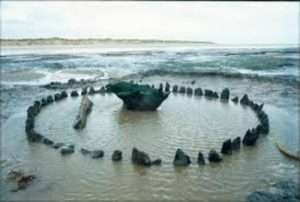
Split timbers used.

Cancer: Crab/lobster.
The River Yar on the Isle of Wight, England, rises near the beach at Freshwater Bay, on the south coast, and flows only a few miles north to Yarmouth where it meets the Solent. Most of the river is a tidal estuary. Its headwaters have been truncated by erosion of the south coast. The Yar is one of two rivers of that name on the Isle of Wight. It is referred to as the Western Yar if it is necessary to distinguish between them with the other river being known as the Eastern Yar.
Continued: "You seem to wonder how I come by all the insights and secrets I possess? You often ask me about their source {'spring'?} do you not?' I nodded. ''Well then, now you know,'' he replied, as his eyes followed a swallow as it darted out over our heads in pursuit of an insect.

'flat'? Spirit-'Fire' and soul. Which and why?
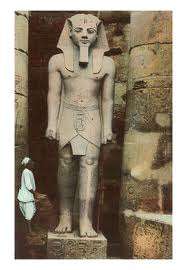
Handle on the moment.
"Amazing how it took that fly in mid-air - a work of art. And now you know why they call them 'swallows'....Two bits of knowledge you have learned today." [Page 65 'Deeper Teachings of Merlyn' / D. Monroe].
"Different professions had different tattoo's. Sailors had anchors. When they crossed the equator it was a turtle. And after 5000 miles a swallow." [Pawn Stars / S18 EP10].
Shellback.
And/or: ''Traditionally, sailors would get the tattoo of a swallow after travelling 5000 nautical miles.'' ['The Chase' / ITV / 2018].
''Horse, fruit and crane flies are all species of the same winged insect.'' ['Tipping Point'].
"The phrase “no flies on someone” is an idiom that means the person mentioned is very quick and astute 12. It is believed to have originated with reference to cattle who were so active that no flies settled on them 2. The phrase is also used in Australian slang as a complimentary phrase roughly translating to “you are clever.”
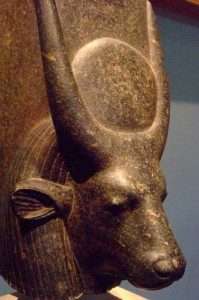 Side note: Jerusalem {the 'center' of the world} was a holy sight well before the Israelites made it their own....Its a story of mans search for holiness....Before Jerusalem expanded in modern times east-west - the ancient city was founded on two mountains {'horizon' link?} - the Moriah and Mount Zion. But it all really started down there on that dry little ridge called the Ophel....
Side note: Jerusalem {the 'center' of the world} was a holy sight well before the Israelites made it their own....Its a story of mans search for holiness....Before Jerusalem expanded in modern times east-west - the ancient city was founded on two mountains {'horizon' link?} - the Moriah and Mount Zion. But it all really started down there on that dry little ridge called the Ophel....
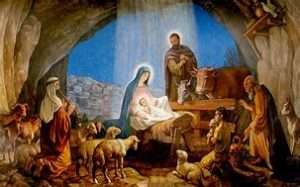
A 'gathering of ones cattle' = 'light'? An illumination of what? Beginning with a 'child'? Head of cow within that light {therefore} 'milk' link?
The Ophel Hill some believe to have its meaning in the 'Evening Star'....It had two advantages - it was steep and crucially it had a SPRING....Two stone towers found ''to protect the spring''... "It is the only spring in the area that points east to the sun. A holy significance was given to it even in those early days..." ['Jerusalem: The Making of a Holy Place' / PBS America. Episode 1].
S/E?
Hunstanton?
"The star of ones being is rising?"
Refresher: "These men have never sought popular approval, or numbers of followers. They are indifferent to these things, for they know how few they are in each generation who are ready for the truth, or who would recognize it, if it were presented to them. They reserve the strong meat for men, while others furnish the milk for babes. They reserve their pearls of wisdom for the few elect, who recognize their value......." [Extract from the 'introduction' to the book 'The Kybalion' by the Yogi Publications Society, Masonic Temple, Chicago, Illinois].
Continued: "The Egyptian name Isis means ''throne'' a reference to the function of the Neter as the ''seat''...The animal of Isis is the swallow." [Page 166 from the book by R. Clark].

It was the 'wall' that made him. Will it be the wall that breaks him?
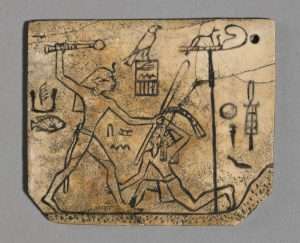
'Swollen'? What's the remedy? Herod to enlarge.
Ophel, with the definite article ha-ophel, is a common noun known from two Ancient Semitic languages, Biblical Hebrew and Moabitic. As a place name or description it appears several times in the Hebrew Bible and once on the Mesha Stele from Moab. There is no ultimate agreement as to its exact meaning, and scholars have long been trying to deduce it from the different contexts it appears in. When used as a common noun, it has been translated as "tumors" (1 Samuel 5:9, 12; 6:5), and in a verbal form it was taken to mean "puffed up" (Habakkuk 2:4), this indicating that the root might be associated with "swelling". When referring to a place, it seems from the context to mean either hill, or fortified place, or a mixture of the two, i.e., a fortified hill, and by considering the presumed meaning of the root, it might signify a "bulging or rounded" fortification {'overhang or overlook'?}.
'Square shoulders / ROUNDED ones'? {Page 12/13 'Hatshepsut: From Queen to Pharaoh' / Metropolitan}.
Shedshed?
And/or: ''In December 1908, the British Egyptologist W. M. Flinders Petrie discovered the intact burial of a woman {with long/narrow neck and body}, and child while excavating in western Thebes, opposite the modern city of Luxor - {'child' more than likely a girl - because of spiral 'earings' and bead 'girdle',}. Found north of the road that led to the Valley of the Kings. The grave was not elaborate, just a shallow trench cut into the rock BELOW AN OVERHANG and masked from view by a group of boulders {'Elephant Island'?}. Considering the simplicity of the burial place, the contents were of unexpected richness {'pine martin'?} and quality.'' [Page 15 'Hatshepsut' / same book].
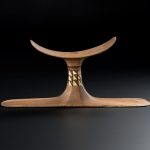
Raised up?
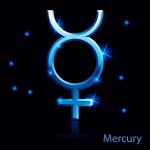 Items included: 'Feathered' designed coffin peculiar to Thebes. SIX Nubian pots - {''placed in three stringed nets/bags at one end of a large wooden pole}. Stone bowl decorated with monkeys, basket containing a horn - an 'eight' petalled one.
Items included: 'Feathered' designed coffin peculiar to Thebes. SIX Nubian pots - {''placed in three stringed nets/bags at one end of a large wooden pole}. Stone bowl decorated with monkeys, basket containing a horn - an 'eight' petalled one.
'Horn of Plenty'?
Continued: Biblical verses in which it has been translated either as "fortified place " (tower, citadel, stronghold etc.) or "hill" are 2 Kings 5:24, 2 Chronicles 27:3 and 33:14, Isaiah 32:14, Nehemiah 3:26 and 11:21, and Micah 4:8. On the Mesha Stele, named for the king of Moab who erected it, Mesha says: "I built Q-R-CH-H (? Karhah), the wall of ye'arim [forests], and the wall of ophel and I built its gates and I built its towers." Here ophel is commonly translated as "citadel". [Wiki].
Try ''petrified'' to 'see' a possible answer i.e., wood and stone. 'Joining' of the two - as a means.…?
Synchronistic?: ''Herod the Great in his old age suffered a terrible death. The 'lower half' of his body including his scrotum swelled up {tumor?} with poisonous fluids, and in this fluid flies laid their eggs." ['Jerusalem: The Making of a Holy Place'].
'Cancer'?

Astro ceiling in Senenmut bare tomb chamber. 'Folded'?
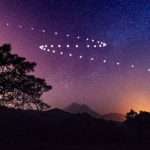
Retrograde
Side note: "Mars is the first 'superior' planet, lying outside the orbit of the earth...It appears to grow in size and power as it advances towards the earth and is at its closest when the Earth is between the Sun and Mars. It then appears to retreat until it reaches its furthest distance from the Earth, on the other side of the Sun. Known as the god Ares by the Greeks, the Roman month of MARCH {when the Sun is in the sign of Aries} was named after this planet." ['Mapping the Psyche' / Vol. 1 / Clare Martin].
REFRESHER: Something to ponder on: "I have another poem I would like to read. This one is by Rabindranath Tagore, from the Flight of Swans: The wind, you have made free therefore it lightly obeys your command; but me, you have loaded with burdens, with them I toil on. Passing from 'death' to death. Slowly I free myself from them, till empty handed I come ready to serve you''
"I want to use this idea, 'Till empty handed I come, ready to serve you' to talk about the cycle of Saturn and its meaning. Because Saturn's orbit is roughly 28-30 years in length, and every seven to eight years there is a very strong Saturnian energy present, when in order to go forwards, we may need to look back {hindsight?}, like Janus, whom we mentioned." ['Saturn, Chiron and the Centaurs'].
''Sometimes Saturn is known as the 'Guardian of the Threshold'..." Same book.
'Watcher of the Walls'? {Game of Thrones}.
N.B. Janus = January.
Side note: "When I was a boy, visiting England, I carved out of wood {'lower'?} a mysterious two-headed figure, without having the slightest notion of what I was carving. Years later, I reproduced this form on a larger scale in stone {'higher'?}, and this figure now stands in my garden in Kusnacht. Only while I was doing this work did the unconscious supply me with a name." ['Symbols of Transformation'/ C. Jung].
'Set in Stone'.
Philosophers Stone? {i.e., a working PRACTICAL example}. 'See' it?
Try Wolfgang Pauli for a {different?} take on the same theme.
Continued: "Press on quickly. Look forward now, and forget backwards, and see what you lack, and not what you have: that is the easiest way to get and keep humility." ['Chapter 2, 'The Cloud of Unknowing'].
Follow the title of the book to see it in its less {cloudy?} point of view.
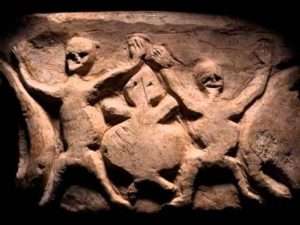
Gemini/Cancer {tortoise?}. ''Like other turtles, tortoises have been around at least 225 million years. A marine turtle that eons ago learned to live on land, the tortoise traded fins for short {weak or strong?} legs, and the plates on its back gradually increased in size as a defence and grew to form a dome....it uses its bladder as a reservoir for storing water, and by digging a trench inside the earth escapes the blazing desert sun or hibernates for months below the frost zone." [Page 192 'The Book of Symbols: Reflections on Archetypal Images / Taschen]. Question. Mumbo jumbo or an intuitive SENSE of something - in the natural SENSE of the 'word'? Try ''tortoise'' .
A working example: ''The woundings of our lives can cause the withdrawal of substance, the leaching of our spirits {'leak at the seams'?}....'Wisdom through suffering', Sophocles said.....for it is the trials of wounding that all our immature or shadowed parts rise to meet us.....When i graduated from high school, my lessor selves - jubilant and inflated from a star-strewn adolescence - were just about ready for a spectacular fall....My college career began in one of the heavenly antechambers but proceeded gently downward, with occasional slight upturns until it plunged headlong into the most complete misery i had ever known. From this nadir, i rose again to a safe harbour in purgatory {'middle way'?}, until i finally graduated into a kind of redemption....but not before wounding had taken its toll....I discovered that the wounding pathos of our own local stories contains the seed of healing and of transformation....All myth, in fact, has wounding at its core....'' [Page 257/267 'A Mythic Life' / J. Houston].
Cancer to enlarge.
Rhodes Island?

REFRESHER: "Three of the four were purposely smashed. Only one left standing."
Something extra: ''The Greek word kentauros is generally regarded as being of obscure origin.[3] The etymology from ken + tauros, 'piercing bull', was a euhemerist suggestion in Palaephatus' rationalizing text on Greek mythology, On Incredible Tales (Περὶ ἀπίστων), which included mounted archers from a village called Nephele eliminating a herd of bulls that were the scourge of Ixion's kingdom.[4] Another possible related etymology can be "bull-slayer." [Wiki].
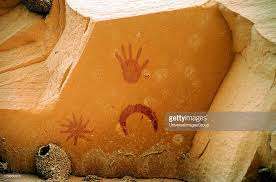
'Three' or 'four'?
A work in progress: ''Another useful analogy to the modern psychological Gnostic process is the fourfold structure {'sixteen'?} of the clasical Greek drama: agon or contest; pathos or defeat; threnos, or lamentation; and theophania, or a divinely accomplished redemption....It is only the fourth and last that may be described as pleasant or joyous, while the other three are characterized by struggle, defeat and mourning.'' [Page 40 'The Gnostic Jung: and the Seven Sermons to the Dead' / S. Hoeller].
A working example: ''Hathor's fourfold nature at Denderah...in reliefs, in texts, and especially in the sistrum columns...each with 4 faces. They also compressed a solar 'lifetime' into 4 phases of 'birth' , 'life', 'fruitfulness', and 'old age/burial'...represented with the 4 Ka's in the ''Pure place'' where Nut adorns the ceiling.'' [Page 87/8 'Hathor's Alchemy'].

'Noble spirit'? A ''foreign'' one? Canary Islands to enlarge.
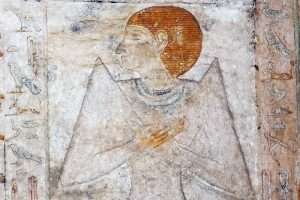
''Ginger/red''?
And/or: ''The waters of the Nun, able to reverse time, changing from old man to 'child', from death to birth as the 'Agathodaimon of the Ancestors'....Sometimes a single image speaks a thousand words. On the crypts south wall at Denderah a relief is seen evoking Harsomtus's birth {the 'child' Horus}...Depicted by a pair of OVAL shapes, each enclosing a snake, and surging from a lotus..the plant of dawn....'OPEN FOR ME' is the plea to Hathor of Denderah in a 19th Dynasty spell for hastening birth..the birth brick{s} of which not only is seen beneath each oval in the relief, but were also placed at the corners of the foundation ceremony.'' [Page 88/9].
OPEN AIRED therefore 'air' link.
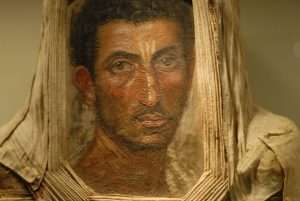
Face to face?
From a different perspective: ''Alte Burg is a large Celtic hilltop fortification, or hillfort, that may have been used as a cult or assembly site for the regional population. It is located 9 kilometers from a major settlement of the Hallstatt and early La Tène period, the Heuneburg. Alte Burg lies in the municipality of Langenenslingen in Baden-Württemberg, Germany.''
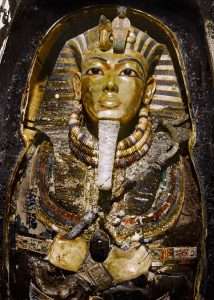
Agathodaimon?
And/or: ''From the point of view of the universe, people are like mayflies; but from the point of view of the Way, even the universe is an evanescent reflection. Only the true essence {'bit'?} of the original spirit transcends the primal organization and is above it. Vitality and energy degenerate along with the universe {E-W?}, but the original spirit is still there {S-N?} - this is the infinite. The production of the universe all derives from this.
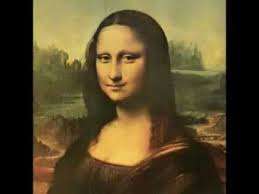
Veiled or UNveiled? 'Observer being observed'? In what SENSE? Above-below OR Below-above?
If learners can just preserve the original spirit, they live transcendently outside of yin and yang. They are not within the three realms. This is possible only by 'seeing'' essence. This is what is called the original face.'' [Page 13 'The Secret of the Golden Flower' / T. Cleary].
''The mask of Agamemnon'?
Side note: "The radiant face of Maitre Dominique reflected the serenity of his certitude, but an exaltation came over his listeners. Swept up into this emotion, they made use of this springboard to make themselves 'go beyond'..." ['Journey into the Light'].
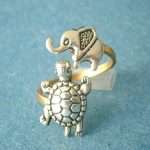 "Swan Song = final performance or activity; in Greek legend; final effort; gesture just before 'death' or retirement."..."The term derives from the legend that, while the swan is mute during its life; swans sing beautifully and mournfully just before they die. The legend was known to be false as early as in the days of ancient Rome, when Pliny the Elder refuted it in 'Natural History' AD77. Nevertheless; poetic imaging proved to be more attractive than scientific method..." [Wikipedia and www.phrases.org.uk]. Death/rebirth link.
"Swan Song = final performance or activity; in Greek legend; final effort; gesture just before 'death' or retirement."..."The term derives from the legend that, while the swan is mute during its life; swans sing beautifully and mournfully just before they die. The legend was known to be false as early as in the days of ancient Rome, when Pliny the Elder refuted it in 'Natural History' AD77. Nevertheless; poetic imaging proved to be more attractive than scientific method..." [Wikipedia and www.phrases.org.uk]. Death/rebirth link.
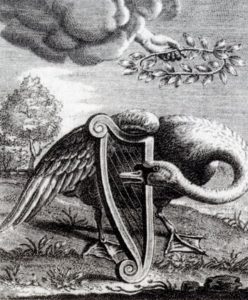
"Reinier van Persijn (1615 – 23 November 1668) was a Dutch Golden Age engraver of portraits and bookplates." Sacred to Apollo. Delos to enlarge.
Question. The end of what? The beginning of what?
''Empty handed'' in relation to: "The actual meaning was in the process of bringing their baskets of soil to it." Quote by Jim Leary {University of Reading} in conversation with T. Robinson on Silbury Hill. ['Stonehenge: Walking Through History'. Series 2]. Try ''soil'' / ''Dendera'' / ''seed''.
Silbury Hill constructed in polygons or spirals? = Highest point in the surrounding area = 'line of sight' link and/or ''horizon''? [Satellite tv].

''A special place in hell'. Question. For the Germans or Euro? {edited 8.2.19}.
REFRESHER: "In Scorpio the individual is forced to touch bottom. He must be willing to surrender his individual uniqueness and individual prerogatives. As he does so, he descends in consciousness into the common root of the group. He learns to live in terms of humanity as a whole. In a sense this is symbolised by Christ's descent into 'hell'. Through such a descent the human depths are 'redeemed' - that is, they are made significant. They are given an individualised meaning and a conscious value by this descent of the individual...He is like a tree with a powerful tap-root, able to draw sustenance from the hidden springs of life...

The tail end of the ''stinger'' = 'two swimming ducks'.
which are the foundation of human behaviour...

Sutton Hoo purse clasp: Wolfs / eagles and ducks.
Most individuals may go under, suffering and being overwhelmed, and failing to experience the 'miracle' in Scorpio. What this miracle is can be gathered from the epic recently written by Antoine de Saint-Exupery - 'Flight to Arras. It is the revelation of humanity to the individual {'grace' link?}...In this identification the individual finds his destiny and purpose. What he has gained as an individual he offers as a sacrificial gift to his community...in and through which the total of reality of humanity is revealed..." [Page 134/5, 'The zodiac as the Universal Matrix' from the chapter on 'Scorpio'].
Sting in the 'tail'?
Orions belt, indicative of same. negative into a positive. As 'its' representation. In 'profile' as well as 'face on'. Left - right. As well as right - left. Depending on intent. Find the Egyptian equivalent to understand same principles. Represented as ''higher/ lower.'' Symbolic of that 'inner' quality.
Question. Any planets within a constellation to give a 'start date' for the 'foundation' of something?
Conjunction?
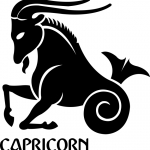
Any common factors?
 "Aquarius was considered {before the discovery of Uranus}, as 'ruled' by Saturn. The Saturn which rules Aquarius and the Jupiter which rules Pisces are, however, expressions of the beginnings of human evolution. They rule over the 'Golden Age' of mankind, that is, the prenatal period and earliest 'childhood' of humanity. Saturn in Capricorn is the 'seed' which closes a cycle; Saturn in Aquarius is the same seed opening the new cycle. The actual and active beginning of the new cycle occurs only as Mars {Aries} tears through the Saturnian seed-envelope and 'germination' occurs..." [Page 172 - same book].
"Aquarius was considered {before the discovery of Uranus}, as 'ruled' by Saturn. The Saturn which rules Aquarius and the Jupiter which rules Pisces are, however, expressions of the beginnings of human evolution. They rule over the 'Golden Age' of mankind, that is, the prenatal period and earliest 'childhood' of humanity. Saturn in Capricorn is the 'seed' which closes a cycle; Saturn in Aquarius is the same seed opening the new cycle. The actual and active beginning of the new cycle occurs only as Mars {Aries} tears through the Saturnian seed-envelope and 'germination' occurs..." [Page 172 - same book].
Senenmut?
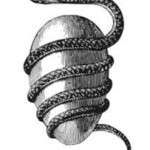
Inner/outer. A beginning or end?
All as a means...?
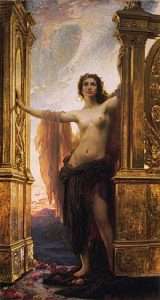
REFRESHER: "Dawn always begins in the bones." Goddess of Dawn. Gateway to the light.
And/or: ''According to Plutarch, the Egyptians called iron the 'bone of Typhon', which the alchemists associated with Mars.'' [Page 150 'Hathor's Alchemy'].
A working example: ''The map on the southern panel could well reflect a specific conjunction of planets in 1534 BCE around the longitude of Sirius. The four planets Jupiter, Saturn, Mercury and Venus are relatively easily recognizable. The planet Mars is not included in the actual grouping and at first sight seems to be missing in the map. However, one explanation is that Mars is represented in the Senenmut map as an empty boat in the west. This may refer to the fact that Mars was retrograde and was not with the other planets (indeed, being in the west in the 1534 BCE conjunction). The reason for the boat being empty is perhaps in this backward movement (a well known phenomenon to the Egyptians) the position of Mars was not considered to be concrete''
Hatshepsut or Nefertiti as a means.....?
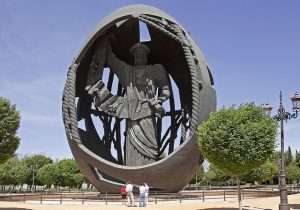
''The Birth of the New Man.'' 'Egg/Incarnation' to enlarge.
And/or: ''sledge bearing ore'' / ''enveloping/envelope'' to enlarge. [Page 151-154 +285/6 'Hathors Alchemy'].
House Tully? {Game of Thrones}.
Side note: ''Uranus is thought to smell like rotten eggs.'' ['The Chase'].
Sulpher link.
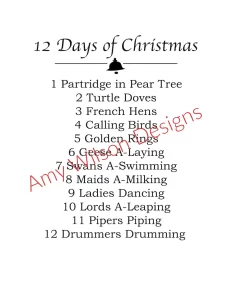 In number symbolism 49/50 equates to 'lower' as 99/100 does to 'higher'. From a 'Jubilee' [Hebrew] to the 'Great Year' [Greek/Sumerian]. As explained in such publications as 'The Sirius Mystery' .Mentioned elsewhere. Especially chapters 4 and 5.
In number symbolism 49/50 equates to 'lower' as 99/100 does to 'higher'. From a 'Jubilee' [Hebrew] to the 'Great Year' [Greek/Sumerian]. As explained in such publications as 'The Sirius Mystery' .Mentioned elsewhere. Especially chapters 4 and 5.
"The 'trapped asteroid' or 'planetoid' Chiron was first discovered in 1977 and remains a misfit in the solar system. Originating from the Kuiper Belt, which lies outside the orbit of Pluto, it is not known how long this visitor will remain with us. With an extremely elliptical orbit of 49-51 years, Chiron's astrological function appears to be to link the outer planets with the 'old world' planets, since it fluctuates almost as far from the Sun as Uranus, and yet it passes within the orbital sphere of Saturn." [Page 4-5 'Mapping the Psyche' / Vol.1].
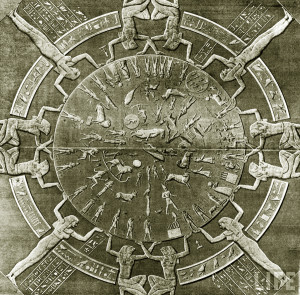
Of particular interest on Dendera's round zodiac is a male figure, his {'strong'?} legs apart as if walking, [or 'striving' ] who sports a ceremonial tail and holds in his right hand a pear-shaped {pine?} mace. Beneath his feet is a goose {duck?}. [Chapter 15, The Cygnus Mystery]. Recall the Hare at the feet of Orion. An awakening in relation to an understanding. North relative to South. See anything? N.B. Dendera, within the U turn of a river........{''about face''?}.
Apophis being the Egyptian equivalent of that same 'negative' aspect. As 'speculated' on within 'The Hiram Key', by way of the Hyksos kings. Some say a link to the Babylonian Tiamat, 'goddess' of the oceans who mated with the 'god' of fresh water,[keys]. Think about it, especially in relation to Marduk, an aspect within the same. Dominance prevails... 'lower' over 'higher'. The 'Dragon' rules, [key].
Mother of Dragons? {Game of Thrones}.
Together with "The Dragon is an old glyph for 'Astral light' [primordial principle] which is the wisdom of Chaos", [page 73 'The Secret Doctrine'. Mentioned within]. Final link to the word 'lucifer'...the light bringer, a link to 'dawn' or the morning star.[Wikipedia]. That representation of a 'negative' [or unconscious,i.e.,unknown quantity], still has within it, a positive potential.
Benjem Stark with his flaming morning star? {Game of Thrones}.
Venus?
That negative however within Egyptian culture, has the positive overcoming the negative,[link to ma'at. Purpose of]... that u-turn made by way of 'Mehen' and 'Wadjet', that became; for the Egyptians; that ultimate positive symbol the 'Uraeus' and its relevance to the word Kingship. Those Twelve 'heads' that Apophis 'consumes' but are freed when Apophis is 'vanquished', [www.touregypt.net]...by way of those positive aspects represented by 'Mehen' and 'Wadjet' within the whole, i.e., Apophis [by way of 'Uraeus']... gives clues as to Freemasons symbolism of the 'legend' of Hiram Abif and its purpose with the candidate in mind.

Where have you seen it before?
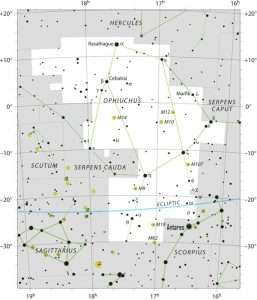
'Thirteenth' sign? + Supernova of 1604.
Refresher: "The ancient ones of early eastern Christianity taught that, in relation to intruding thoughts, we should be so vigilant that as soon as they ''show there heads, like a serpent appearing through a hole, we must cut it off''! This is a potent use of the 'stop exercise' which is also meant to halt the entry and influence of ''I's'' that seek to claim our identity. The more you live in a more quiet inner place {an inner sanctuary} where features {negative ones?} cannot take over, the more you will see the difference between passing thoughts and feelings and your deeper self." ['Wisdom of the 4th Way'].
Side note: ''The wise Chinese would say in the words of I Ching: When yang has reached its greatest strength, the dark power of yin is born within its depths, for night begins at MIDDAY when yang breaks up and begins to change into yin.'' [Page 13 'Alchemical Studies'].
Zenith.
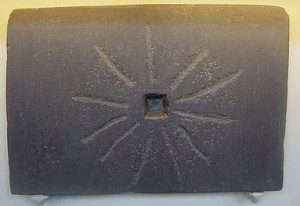
Shabaka Stone. The text first declares the political and theological supremacy {'parliament'?} - of the Memphite god Ptah, the king of both Upper and Lower Egypt, and the creator of the Ennead. The inscription then describes how Horus, as a manifestation of Ptah, initially rules Lower Egypt while his rival Set rules Upper Egypt. The first line of the stone presents the fivefold royal titulary of the king: "The living Horus: Who prospers the Two Lands; the Two Ladies: Who prospers the Two Lands; the King of Upper and Lower Egypt: Neferkare; the Son of Re: [Shabaka], beloved of Ptah-South-of-His-Wall, who lives like Re forever."[14] The first three names emphasize the king's manifestation as a living god (especially of the falcon-headed Horus, patron god to the Egyptian kings), while the latter two names (the king's throne name and birth name) refer to Egypt's division and unification.[6]
The second line, a dedicatory introduction, states that the stone is a copy of the surviving contents of a worm-eaten papyrus Shabaka found as he was inspecting the Great Temple of Ptah.'' 'ELEVEN'?
Continued: Fifteen 'individuals',[aspects of self] go in search of Mr Abif,[possible potential of higher self] to get the secrets [keys] of becoming a 'master' [higher] mason. With 'murder',[sacrifice link] on 'their' minds. Twelve decide not to go through with it,['consumed'...with guilt? link to the twelve 'heads' and twelve in relation to thirteen.Think about it]. The three remaining do the dastardly deed, [negative over positive] but repent 'for their sins'?... later on. That about u-turn is now possible, a link to the rising Phoenix and death/rebirth symbolism, and/or Mehen/Wadjet in relation to Apophis. Remember what 'three'; is in the main; always symbolic of, i.e., "In order to follow an esoteric path it is not necessary to make a quantitative study of the doctrine; it is enough to know the essentials, which are centered on the nature of 'god' and the nature of man. The symbolism of the elementary numbers is always enlightening, and in this case it is the number three, which holds as it were the keys to understanding the relationship between the 'creator' and his human image. The presence of certain triads in the world, such as that of the primary colors is the proof of a triplicity in the Divine nature itself, the supreme 'Archetype' of all that exists". [Chapter five. 'The Eleventh Hour']. Recall those 'three' boulders at the lowest level at the temple on Elephant Island. Those three aspects [and what they represent] in relation to Lower / higher.
"Jews stationed at Elephantine in Egypt in the 5th century BC, worshiped Jehovah and his goddess Anat Jahu." [From the book by T. Freke and P.Gandy].
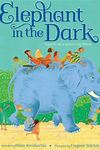 Side note: {something hinted at}: "After eating and exchanging impressions {those first ones?}, it seemed clear that each of us had been naturally drawn to a different section of the figure. Bedewyr to the right staff, Cai to the left; Gwalchmai to the very center torso, and I to the head. This unusual {'peculiar'?} difference seemed extraordinary to me, but Merlyn thought otherwise. He said it was the simple result of our being 'various aspects of the same thing' which was exactly why we were brought here in the first place." [Extract from one of the books by D. Monroe].
Side note: {something hinted at}: "After eating and exchanging impressions {those first ones?}, it seemed clear that each of us had been naturally drawn to a different section of the figure. Bedewyr to the right staff, Cai to the left; Gwalchmai to the very center torso, and I to the head. This unusual {'peculiar'?} difference seemed extraordinary to me, but Merlyn thought otherwise. He said it was the simple result of our being 'various aspects of the same thing' which was exactly why we were brought here in the first place." [Extract from one of the books by D. Monroe].
Continued: Analogy; with the same intent..."On an island there lived three hermits. They were so simple that the only prayer they used was: ''We art three; thou art three - have mercy on us!" Great 'miracles' were manifested during this naive prayer." [Extract from the book 'Autobiography of a Yogi' from a folk tale by Leo Tolstoy]. For a further head scratch - try ''grace'' [link to ''mercy''] before those first impressions tell the ''lower'' something else. Then try ''miracle'' - same reason.
'Menw - the Son of the Three Shouts'. {Eastern equivalent}?
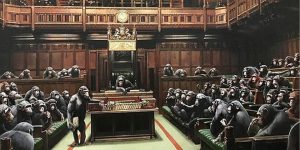
''Psychological transformation! Who are they fcking kidding!''

Spots or stripes? Pinky or perky?
And/or {i.e.,as seen from a different perspective - a different 'point/'angle' of view'} - "In Stephen Sondheim's musical 'Sunday in the Park with George', which is about the pointillist painter, George Seurat, the creation of beauty was described as a 'connection process'. Seurat was a master at organizing and connecting colored dots, creating beautiful images that humble us to this day. Sondheim reminds us of the importance of this process with his simple lyrics: 'Connect, George, connect'... In the process of reading this book, you will take part in a connective healing journey. Your mind and heart will be extended and united as Dr Pearl connects the dots of his life...The key to understanding this {new?} level of healing is the prefix ''re'' - i.e.,re-attending, re-connecting, re-regulating, re-ordering healing... " [From the book 'The Reconnection' by Dr E. Pearl].
Side note: ''The Sondheim Theatre (formerly the Queen's Theatre) is a West End theatre located in Shaftesbury Avenue on the corner of Wardour Street in the City of Westminster, London. It opened as the Queen's Theatre on 8 October 1907, as a twin to the neighbouring Hicks Theatre (now the Gielgud Theatre) which had opened ten months earlier. Both theatres were designed by W. G. R. Sprague. The theatre was Grade II listed by English Heritage in June 1972.[1]
In 2019 the theatre's name was changed from the Queen's to the Sondheim Theatre (after Stephen Sondheim) after a 20 week refurbishment. The theatre reopened on 18 December 2019. The original plan was to name the venue the Central Theatre. However, after lengthy debate, it was named the Queen's Theatre and a portrait of Queen Alexandra was hung in the foyer.[2]
The first production at the Queen's Theatre was a comedy by Madeleine Lucette Ryley called The Sugar Bowl. Although it was poorly received and ran for only 36 performances, the theatre received glowing reviews. The Stage on 10 October 1907 described the theatre as:
A two-tier house, the Queen's holds about 1200 persons, representing some £300 in money. The colour scheme of the walls and roof is white and gold, while green is the hue of the carpets, hangings and upholstery, and of the very charming velvet tableau curtain.
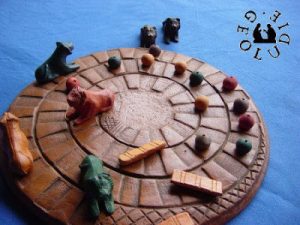
Mehen snake game. No one knows how it was played. Very similar to the Phaistos Disc. Enlarged elsewhere. To get as close to an answer define those keys i.e., pairs of lions {Aker}. Pillars and 12 counters {zodiac}. From the outside in? Central to a 'Theme'?
Continued: Understanding that universal framework {especially in relation to re-ligare} defines the above 'three' statements {i.e.,in relation to higher/lower} - as it does with...
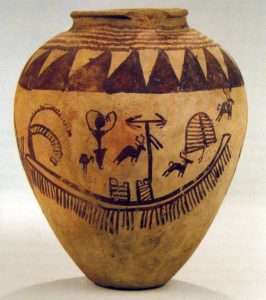
Poop deck. Heading north? from a southern start point?
Review: "In the Book of What is in the Dwat, the incarnation of the principle of light, stands in the boats cabin during the first six hours of the night, that is during the descent. For the reascent he stands in the coils of the serpent Mehen, whose name means 'spiralic', and who plays a role in the rebirth of the solar globe. Putting together such teachings, one can conceive that the 'sun's' regeneration occurs by virtue of the flux of spiral currents which ceaselessly precipitate and coagulate the impalpable cosmic substance...At the eleventh hour the regenerated solar globe is represented, for the first and only time in this Book, at the prow of a boat {Part 3}. It is drawn towards the Eastern gate of the sky by Mehen...In the twelfth hour in the middle register...This is the books apotheosis and can be understood in several ways.
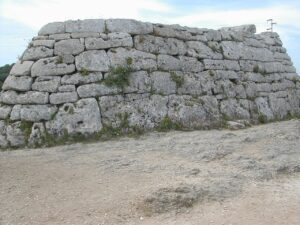
Inverted keel of a ship. Found on the Balearic Islands.
Physically it is the glorious rebirth of the 'solar' globe, and is therefore the triumph of light over darkness...Spiritually...through multiple purifications, transforms the densest matter {Sarsen stones?} into a more subtle one {'Blue' ones?}...the conquest of shadowless light." [Extract from the book 'Egyptian Mysteries' - in relation to tombs at Thebes. Mentioned elsewhere].
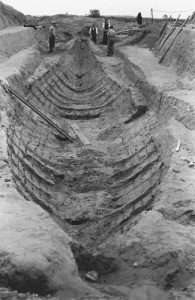 Try ''Pure'' in all its forms. As a means....?
Try ''Pure'' in all its forms. As a means....?
And/or: "All the prows {of boats} found within the tomb of Tut - point to the West." ['King Tut's Last Mission'' / Channel 5 / 08/02/2020].
Abydos in relation to Thebes. Question. Where would ''shadow'' be represented? Or what would it be represented by? Don't forget 'Part 3,' i.e.,try ''ship'' and/or ''plough'' and/or ''spiral''.
"Ploughing is repetitive work, furrow after furrow, furlong [a furrows length] after furlong. But now its time to stop work for a while, 'elevenses' as the English say, the time 11a.m.,called in Malay tulih tenggala, ''when the plough is idle''. [Quote taken from 'The Book of Babel'. Mentioned elsewhere].
11th Hour?
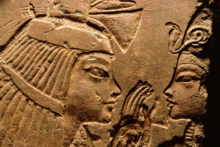
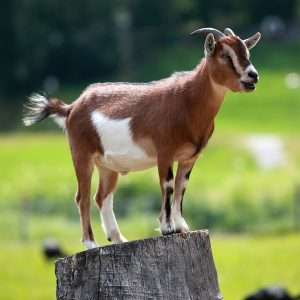
Goat on a stump {'Nanny'}?
Apply {understand?} all the above to define the following: "...The Sun is its 'father' the Moon its 'mother', the 'wind' hath carried it in its belly, the earth is its nurse. The 'father' of all perfection in the whole world is here. Its force or power is entire if it be converted into earth. Separate thou the 'earth' from the fire, the subtle from the gross sweetly with great industry. It ascends from the earth to the heaven and again it descends to the earth and receives the force of things 'superior' and 'inferior'. By this means you shall have the glory {''grace''?} of the whole world and thereby all obscurity shall 'fly' from you. Its force is above all force. For it vanquishes every subtle thing and penetrates every solid thing. So was the world created...Hence i am called Hermes Trismegist, having the three parts the philosophy of the 'whole' world. That which i have said of the operation of the 'Sun' is accomplished and ended." " ['Emerald Tablet].
Follow the title to define {keys?} - in its broader {worldly?} context.
The 'nurse' of Bran Stark? {Game of Thrones}. After all - she can tell a 'bloody' good story can't she? [Series 1. Episode 3].
A {working?} example: "The furious fighting {''struggle''?} that continues in Book 11 gives possibly the most comprehensive conceptual chart of the constellations of the night sky in the entire Iliad. Constellations identified with Greek warriors are: Leo, Perseus, Argo Navis, Lyra, Eridanus, Orhiuchus and Bootes - and those of the Trojans are Ursa Major, Virgo, Orion, Aquarius, Equuleus, and Serpens Caput..." ['Homer's Secret Iliad' / Page 111].
SIDE NOTE: "This is what the legend means when it says that each star is a soul. This is the meaning of the five-pointed star, symbol of man..." [Her-Bak'].
'Mans Search for Meaning' / Viktor Frankl.
A working example: "Archaeologists have discovered rare, 2,400-year-old puppets in El Salvador that may have been used in public rituals to perform well-known events that were "mythical or real." The finding suggests that the people of El Salvador were more integrated into the wider Central American culture than previously thought, a new study finds.
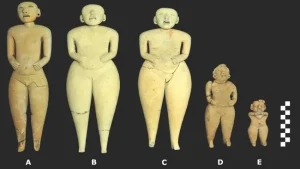
Femurs?

'She who loves silence'. All 'male' below?
Archaeologists found the five ceramic figurines, depicting four females and one male, on top of a large pyramidal structure in 2022. The unexpected find, reported in the journal Antiquity on Wednesday (March 5), initially appeared to be part of lavish burial offerings. But because the archaeologists found no human remains onsite, the puppets' location at the tallest pyramid at the site instead hints that they were used for public rituals, the archaeologists said.
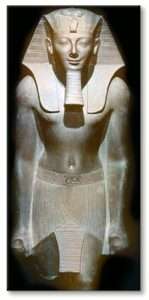
Happy or sad?

Waiting for what? Date with Venus?
"One of the most striking features of the puppets is their dramatic facial expression, which changes depending on the angle that we look at them from," study lead author Jan Szymański, an archaeologist at the University of Warsaw, said in a statement. At eye-level, the puppets appear angry; from above, they appear to be grinning; from below, they look scared. "This is a conscious design, perhaps meant to enhance the gamut of ritual performances the puppets could have been used in," Szymański said.
Three of the five puppets are each nearly 1 foot (30 centimeters) tall, while the others are shorter at 0.6 feet (18 cm) and 0.3 feet (10 cm) in height. The three larger figurines are depicted naked and don't have hair or jewelry, but the two smaller ones are fashioned with "locks of hair on their foreheads and earspools in the lobes," the researchers wrote in the study.
The larger figurines have movable heads and open mouths, like modern toy dolls, and may have been used in a theatrical scene or tableau to convey messages or stories from "readily decodable events, mythical or real," that are now lost, the archaeologists wrote. It was unclear whether these figures represent actual individuals."
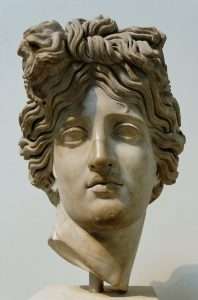
Apollo: Curl or knot?
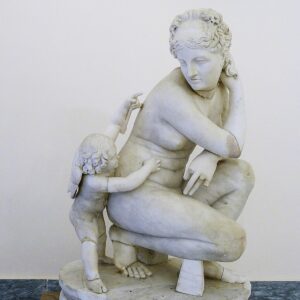
Venus and Cupid. Father 'Mars' : Everyone would call him Taliesin ('radiant brow') the chief of poets. Dr. MacCulloch suggests that there was an earlier Taliesin than the sixth-century bard, and that he was a Celtic Apollo; which would account for the 'radiant brow' and for his appearance among other faded gods and heroes at King Arthur's Court in the Romance of Kilhwch and Olwen. (Apollo himself had once been a dweller in the sea—the dolphin was sacred to him—and oddly enough John the Baptist seems to have been identified by early Christian syncretists in Egypt with the Chaldean god Oannes who according to Berossus used to appear at long intervals in the Persian Gulf, disguised as the merman Odacon, and renew his original revelation to the faithful. The case is further complicated by the myth ofHuan, the Flower-goddess Blodeuwedd's victim, who was really the god Llew Llaw, another 'sea dweller'.)
And/or: The rift now separating Christianity and poetry is, indeed, the same that divided Judaism and Ashtaroth-worship after the post-Exilie religious reformation. Various attempts at bridging it by the Clementines, Collyridians, Maniehees and other early Christian heretics and by the Virgin worshipping palmers and troubadours of Crusading times have left their mark on Church ritual and doctrine, but have always been succeeded by a strong puritanical reaction. It has become impossible to combine the once identical functions of priest and poet without doing violence to one calling or the other, as may be seen in the works of Englishmen who have continued to write poetry after their ordination: John Skelton, John Donne, William Crashaw, George Herbert, Robert Herrick, Jonathan Swift, George Crabbe, Charles Kingsley, Gerard Manley Hopkins. The poet survived in easy vigour only where the priest was shown the door; as when Skelton, to signalize his independence of Church discipline, wore the Muse-name 'Calliope' embroidered on his cassock in silk and gold, or when Herrick proved his devotion to poetic myth by pouring libations of Devonshire barley-ale from a silver cup to a pampered white pig. {'The White Goddess' / R. Graves}.
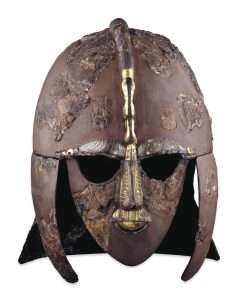
Bristles? A 'taste' in the mouth?
'Bristle' to enlarge.
Analogy: "They believed Viking women spent their days as traditional homemakers - preparing food, cooking, making clothes, and caring for the kids. Hedenstierna-Jonson wasn't so sure. She had conducted extensive research at Birka and knew that the garrison hall {Horemheb?} there had once bristled with with iron weapons and that it had rested upon offerings of iron spearheads {Athene?}. It was a profoundly martial place: one dedicated to the Spear Lord himself, Odin. The decision to bury an individual so close to the Viking garrison and its sacred ground was in itself a mark of high esteem - one likely awarded to a distinquished military figure....As it turned out it was a Viking woman warrior. On a high terrace {'pavilion'?} the mourners had lowered the body into a magnificent, weapon filled grave. There was no marker or other sign to mark the spot. No mound, no memorial, no grand vista, no outline even of the excavated grave. A dense thicket of green shrubs had taken root on the spot, shrounding the tomb in branches and leaves." {Pages 70-87 'National Geographic' / March 2025}.
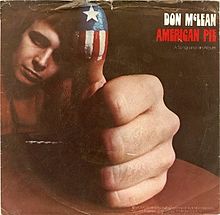
''A long, long time ago, Don McLean says his original lyrics reveal 'everything there is to know'. " Coincidence or a meaningful one? Try ''star'' and/or ''stellar''. And/or: " The grey matter of the brain is actually the veil of the Spiritual substance of the stars." ['The Zelator']. And/or: "born from the stella Virgo, who in the stella mythology is the Virgin corn goddess." Same book. Try ''wheat/barley/corn''.

Manger: "to eat" or "to chew."
And/or: "The eleven pairs of horses to which Homer refers {i.e.,Pandarus,i.e.'In my father's stable there are eleven excellent chariots, fresh from the builder, quite new, with cloths spread over them; and by each of them there stand a pair of horses, champing barley and rye'} - are the twenty two {11+11?} stars of Sagittarius {the astronomical home of Pandarus and his father} and contiguous Corona Australis {Pandarus quiver}. The 'barley' and 'rye' they are eating are common Homeric codewords and indicate that the stars are set against the background of the Milky Way; the chariots cannot be seen for they are covered with 'cloths' {'wollen' ones?}. It will never be known who made the first study of this corner of the sky, but they were expert enough to observe that twenty two stars could be 'paired' according to their brightness or magnitude..." [Same book].
Sheep decans?
Question. To which of the two {i.e.,Greek / Trojan} does the constellation Sagittarius 'belong' to. And why?
Question 2. Any relevance to the 22 letters of say, the Hebrew alphabet?
Side note: "Achilles {'Canis Major'} has a trio of fine horses...Two of the horses, Xanthus and Balius are 'immortal' and mark stars in the Milky Way. Pedasus is 'mortal' and, although said to be every bit as as good as the immortal pair, his star is just outside the Milky Way. The configuration of these makes the familiar triangle of one of Homer's chariots." [Same book].
N.B. ''Transcendent third'' link - in reverse - i.e.,top/down. 'See' it? Understanding that defines ''horses'' in relation to say, ''bulls''.
Refresher:"This is what the legend means when it says that each star is a soul. This is the meaning of the five-pointed star, symbol of man..." [Her-Bak']. Try ''Krishna'' for something extra to ponder on.
Something extra: ''On July 4, 1187, the Crusaders were defeated definitively in the Horns of Hattin. The Holy Land returned to the hands of the Muslims. Christian holy places started falling into oblivion, and their destiny was abandonment and deterioration.

INNER/OUTER: Tree of 'life' or 'knowledge' or does it matter? One and same thing? Question. Would those planks become a good 'foundation' if laid in the horizontal? "Breath" to enlarge.

Manger: "to eat" or "to chew."
One hundred years after the Muslim conquest, a German Dominican friar called Burchard of Mount Zion, passed by the plain of Gennesaret {'Garden of the Prince'}. He testified that the Magdalene’s house was preserved in “Magdalum”. Burchard was able to find the house and visit it, but he does not mention the state he found it. A decade later, in 1294, Ricoldus de Monte Crucis left in writing the impression he took when he saw the church of Magdala: “We arrived at Magdalum, the village of Mary Magdalene, next to Lake Gennesaret. There we cried and mourned because we found a beautiful church that, although was not destroyed, had been transformed into a stable. There we sang and preached about the Gospel of the Magdalene”. We must confess that Ricoldus’ text is not entirely clear, and perhaps, instead of “transformed into a stable”, we should translate it to “blocked with planks”. In any case, the reaction of these pilgrims confirms that the Church of the Magdalene was already in such a state, that ripped away tears from those present.'' ['A Church in SAD Condition' / Magdala / Israel].
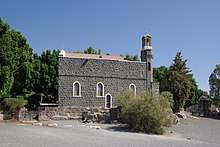
'Primacy of Peter': N/W shore of Galilee. Red tiles. 'Wattle' to enlarge.
1294 will be the year in which, for the last time, a Church in Magdala is mentioned. It will be necessary to wait until 2014 to see again Christian pilgrims raising their voices to God in a church in Magdala. And this time they will no longer sing dirges, but hymns of JOY.''
N.B. ''Prince'' = 'elephant' link?
And/or: ''The name may originate from the Hebrew word kinnor ("harp" or "lyre") - which the lake's shape resembles. It has also been called the Lake of Gennesaret or the Sea of Gennesaret ( Luke 5:1) after the name of a small fruitful plain which lies on its western side.''
"Tabgha (Arabic: الطابغة, al-Tabigha; Hebrew: עין שבע, Ein Sheva which means "spring of seven") is an area situated on the north-western shore of the Sea of Galilee in Israel and a depopulated Palestinian village. It is traditionally accepted as the place of the miracle of the multiplication of the loaves and fishes (Mark 6:30-46) and the fourth resurrection appearance of Jesus (John 21:1-24) after his Crucifixion. The village population was expelled in 1948 during Operation Broom....The site's name is derived from the Greek name Heptapegon ("seven springs"). The name was later shortened to "Tapego", and was eventually changed to "Tabgha" in Arabic."
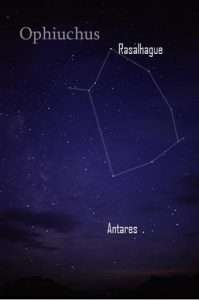
Square and triangle. 'Three and four'?
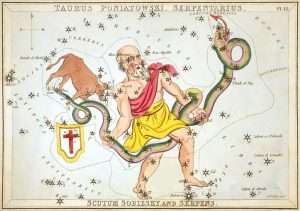
Ophiuchus. '13TH' constellation. {Thirteen}
A change of pace; but along a similar path {i.e.,'Freemasonry'}: "The genuine 'secrets' of the order, we are told, have been lost, and substituted secrets are in their place until such time as the true ones will be found." Together with " The stylised death and resurrection of the candidate is the act of making one a 'master' mason." [Emphasis this readers.Chapter one.' Hiram Key' /Knight and Lomas]. Those Twelve heads because of that positive 'effort' are now 'released'. Apophis has been vanquished. Positive over negative, by way of those three aspects, of the now higher self...from which a new awareness 'dawns'. Represented by the morning star...Sirius, [the dog star]. Chapter one, same book. Something 'lost' is now found. I.e., No scrolls will be 'found' under Rosslyn chapel, because that ''understanding'' becomes ''that which was lost is now found''. Question. Which came first...The 'Constellations' or the Mythology associated with them, or the intention of both.... and why?
Venus?
Question. ''Serpent'' = 'middle ground' ?
"There is a further maverick item concerning the Pleiades. As already mentioned, this constellation consists of six readily discernible stars and one considerably fainter. Particularly in Europe and Asia there are many different legends which 'account' for this situation. A typical story tells how one of the sisters lost her 'virginity', and in her shame hid her light from her companions. P. E. and G. D. Considine write as follows in this connection: 'Of the seven stars one is at present distinctly fainter than the other six, and there are many myths regarding this so called lost Pleiad. In fact the myths occur in so many ancient literature's that there is a well established theory that at one time all seven of the stars were approximately of the same brightness.' Other authors add 'It is remarkable that so many nations speak of them as seven sisters when only six are clearly visible. All the legends therefore have a postscript to account for the missing seventh." [Chapter 4 from the book by S. Gooch]. Recall what ''virginity'' implies.
Side note: "The hebdomad is the only number within the decad {apart from the monad} which neither generates nor is generated by another number within the decad; hence it is called by Pythagoreans ''virgin, not born of mother''.....Moreover, the hebdomad consisting of the dimensions and the four limits makes manifest corporeality and organic life. The limits are point, line, plane, solid; the dimensions are length, breadth, depth." [Page 186 'Alexandria' Vol 3. / D. Fideler].
"...the Virgin Mary was venerated by the medieval church and is still veneraterd by Catholics today, as virgin in our modern sense of the word, even though it is recognised by tradition that she bore carnal children to Joseph after the virgin birth of her Eldest Son, and is also hailed in Latin hymns as spouse as well as mother of her son. These things would form a flagrant contradiction or require an impossible miracle, if they were to be taken as true on the objective plane. If, however, we recognise religious concepts as symbolic and interpret these contradictions psychologically we realise that the term ''virginity'' must refer to a quality, to a subjective state, a psychological attitude, not to a physiological or external fact." [Chapter 8, from the book by the author M. Esther Harding]. Put ''quality'' in the box.
The real question however that the reader should ask of him/her self is the usual one.





